Europe is a feast for the senses. Cobbled stone streets flanked by colourful and quaint houses transport you into another era somewhere while mountains generously topped with snow send shivers of excitement through your being. Monuments that stand as testimony to the genius of long-gone artists, sculptors, and architects, awe you at far-flung corners of the continent, while ethereal lakes hypnotize you with their lustre elsewhere. Europe, to say the least, stuns you with its beauty. It is a seemingly inexhaustible treasure chest of unique places to visit, here we present a melange of offbeat places to visit in Europe, a collection of some of the best hidden gems in Europe.
Table of Contents
Offbeat Places To Visit in Europe – Best Hidden Gems in Europe
A garland strung together with some of the most beautiful gems of Europe is what we present here. These are according to us some of the offbeat places to visit in Europe. These places have been recommended by our traveller friends and we have strung them together for you as a collection of the best offbeat places to visit in Europe. Many of these are unusual places in Europe that you may not find in a typical Europe itinerary.
Rapperswil, Switzerland
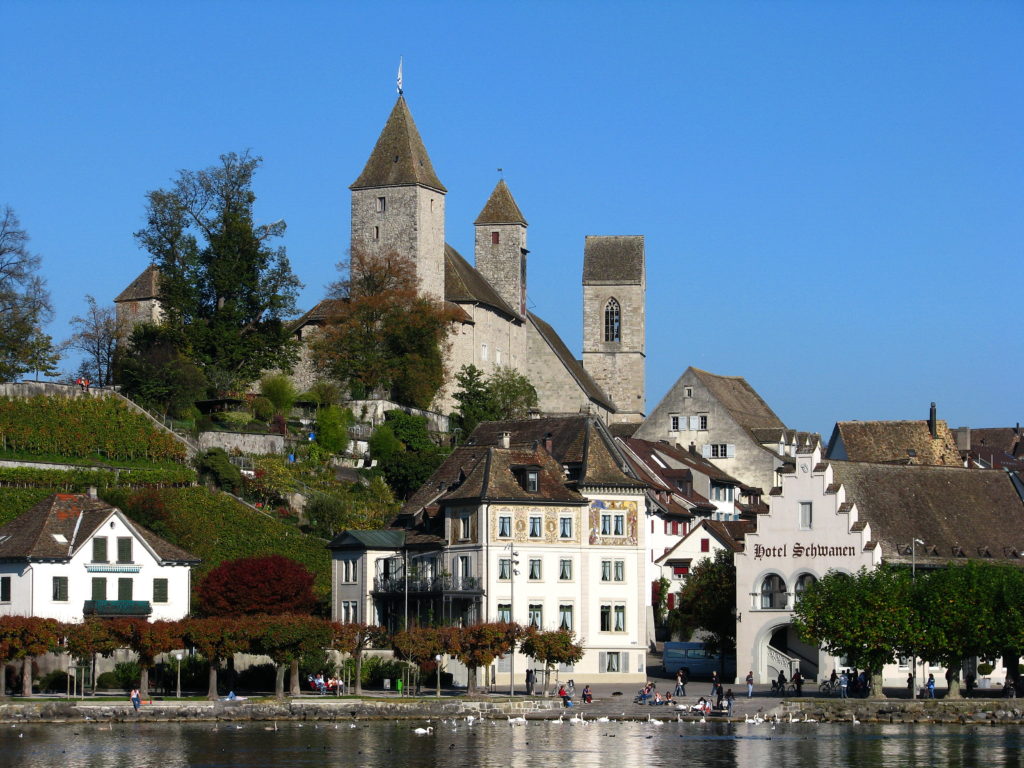
The excitement of travel lies in discovering new places, places that were not on your itinerary and you were not even aware of. One such place is Rapperswil in Switzerland. Switzerland is a country where you feel as if you are in a different fairytale world, a world doubly blessed by nature and crafted lovingly by unseen hands. It is a country with so many beautiful places to visit in Western Europe.
Rapperswil is a picturesque, medieval town that nestles snuggly against the upper end of Lake Zurich. It is about 34 kilometres from Zurich and is easily accessed by a 40-minute train ride. The town has a picture-postcard quality about it. The lake with the mountains in the distance and a medieval castle that towers over the town presents an amazing sight. One can spend hours just sitting by the side of the lake and watching trains making their way up into the Alps in the distance. But there is more to Rapperswil. Rapperswil is also known as the “town of roses”, because of the preponderance of these lovely flowers. There are three rose gardens that enhance the beauty of the town.
Rapperswil has many ancient churches and monasteries that are treasures from the past. A wooden bridge provides access to the other side of the lake and is believed to be the longest wooden bridge in Switzerland. Another place of interest, especially for history aficionados is the Polish Museum housed in an old castle. Rapperswil’s connection to Polish culture is showcased in the museum in the form of photos, busts, and other relics related to the history of the Polish in the area.
Rapperswil is a place that soothes your senses and fills you with a strange euphoria that stays with you long after you have left the place. It is definitely one of the offbeat places to visit in Europe.
Island of Procida, Italy
Linda Faison from La Dolce Fit Vita
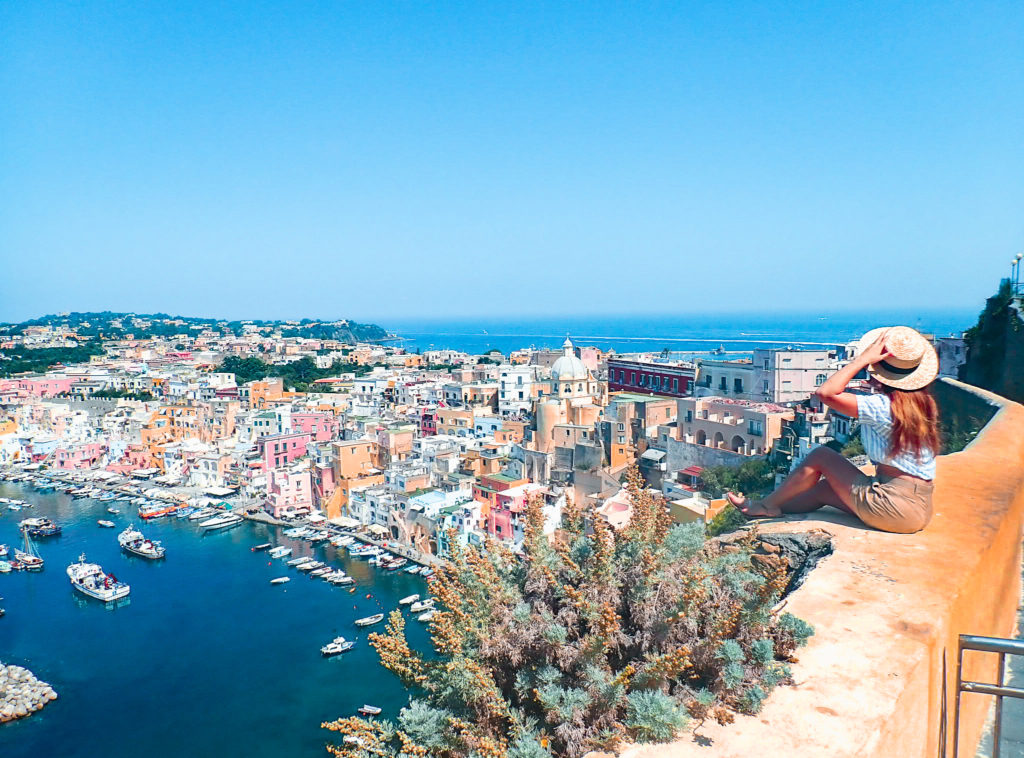
Much cheaper and less crowded than its neighbouring sister islands of Capri and Ischia, Procida Island continues to uphold an authenticity that many coastal cities and islands in Italy have lost, making it one of the offbeat places to visit in Europe. As you explore the Procida island’s very colourful Marina Corricella, you’ll find whistling fishermen at work, always ready to share a story or two. Little old ladies gossiping window to window as they lay out their laundry are the norm, and of course, you can’t miss the little fish boats or Vespas that line each doorstep. The vibes couldn’t get any more Dolce Vita – slow peaceful afternoons filled with seaside aperitifs, cobble-stoned promenades, and limoncello or gelato as a constant accompaniment. What more could one want from this Italian lifestyle?
The island has a rich history of piracy and if you visit Terra Murata, you’ll find that a lot of the doors to this day are still fake (so as to mislead invading pirates). This is the highest point of the island and makes for the most panoramic viewpoint. Nearby, you can take a tour of Palazzo d’Avalos, an ex-Bourbon Royal Palace turned maximum security prison (now abandoned). As you’re led through the cells, the guide will recount attempts to escape and stories of the many inmates that passed through the years. The contrast of rusty shackles with ornate mouldings and faded frescos or the confined jail cells looking out on to some of the most turquoise sea waters really awakens a moment of reflection as you move around the building. Make sure to call to reserve, the tour is about 2 hours and only costs 10 euros!
To get around the island, renting a bicycle is the best option, preferably electric to help with getting to the top of those excellent viewpoints. The island is only 4 km squared so a car is definitely not needed, in fact, you wouldn’t find parking. There are a number of exquisite places to dine. If you’re interested in views, definitely opt for a sea-front seat at La Lampara in Marina Corricella. If the sea is not your priority, head inwards to La Pergola where you get to eat under a lemon orchard, yes that’s right, right under it!
In terms of where to stay there are a number of options for all budget types. B&Bs tend to give more of a local feel and there are quite a few. La Casa Sul Faro serves breakfast every morning in their lemon orchard and everything is local, island-made. So, grab your hat, get ready for some spritz and make your way to this pastel-coloured gem of an island, offbeat places to visit in Europe, before the word gets out.
Terceira Island, Portugal
Sylvia Van Overvelt from Wapiti Travel
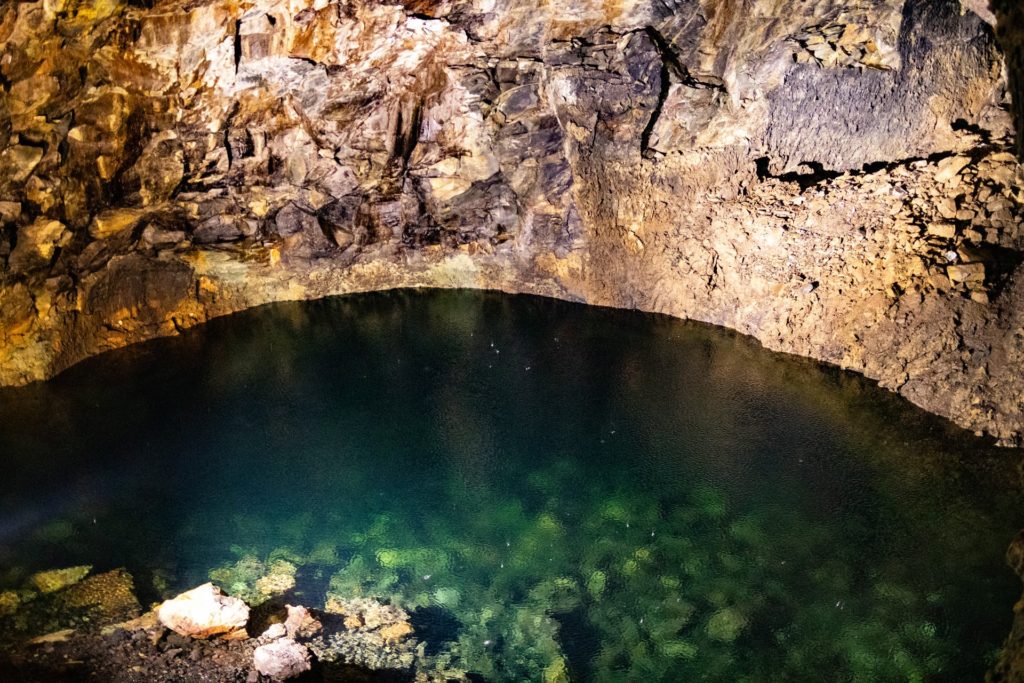
Terceira Island in Portugal is by many described as the most spectacular island in the Azores archipelago, a group of 9 tiny islands hidden in the wide Atlantic Ocean. The pristine islands are till today largely untouched and mass tourism is all but non-existent. The largest island of São Miguel sees most tourists and offers group tours. When you visit the other islands you hardly encounter any other visitors and it feels like you have the whole paradise to yourself. This is what makes a visit to these lush green islands so magical, a place that is one of the most enchanting and offbeat places to visit in Europe.
Terceira Island is the third-largest island of the pack. You can spend a week or more there but most visitors visit multiple islands during their Azores Itinerary. They will stay 3 days to see the highlights before they take a ferry or plane to the next one.
The first thing to do when you arrive at Terceira is driving the loop road. Even though this is the third-largest island a few hours will be all you need to cruise all around. Enjoy the scenery and make sure to stop at the many impressive viewpoints. But by merely driving around the island you would miss the majority of the impressive sights that are located in the centre of the island.
Heading inland, you will discover deep caves and lava tunnels and the fairytale landscape at Furnas do Enxofre. Terceira is also a hiker’s paradise with 8 beautiful hikes for all fitness levels. On sunny days you can cool down in the natural swimming pools.
You wonder what to eat after an intense day of hiking and exploring this volcanic paradise.
The main ingredient of the Azores cuisine is fish. You can taste some of the freshest seafood on these islands. If a restaurant promotes the catch of the day it’s literarily that. Fisherman bring ashore their catch and it is directly transported to the restaurants and on your plate the same day. One of the local delicacies is Limpets or Lapas in Portuguese. Small clams typically served grilled and flavoured with pepper and garlic.
A traditional meal would always start with some cheese. Try the Pimentinha for a change, a local cheese with a touch of pepper. Enjoy your stay in paradise, one of the best offbeat places to visit in Europe.
Akureyri, Iceland
Katie Bessant from Life at Number 26
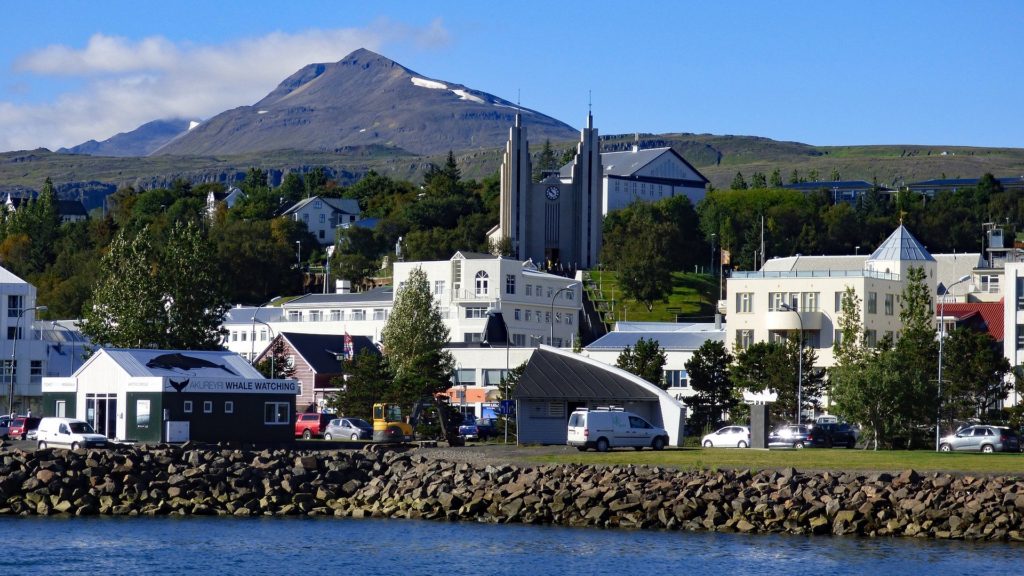
In the North of Iceland, you will find the second largest city and most Northern city in the world, Akureyri. One of the most unique things about Akureyri is its heart-shaped red traffic lights. It is the only place in the world to have these shaped traffic lights, making it one of the unique places to visit in Northern Europe.
They were first introduced in 2008 after the financial crash to try and boost the mood of the city’s residents.
Things to Do in Akureyri, Iceland
Go Skiing
A short drive from the town, the ski resort of Hlíðarfjall is open during the winter and is popular with locals.
Admire the Natural Wonders
Explore the nearby lava fields, mud pools, and waterfalls of Godafoss and Dettifoss at Lake Myvatn. Make sure to pack your swimming costume for a dip in one of the many hot springs.
Watch the Northern Lights
In the winter months, Akureyri is one of the best places to see the Northern Lights.
Whale Watching
Observe these amazing animals in their natural habitat.
Places to Eat in Akureyri, Iceland
Fresh fish is unique to Iceland and there are lots of sushi bars dotted around the city. If you fancy a more traditional fish and chips, Akureyri Fish and Chips in the centre is brilliant. Try the delicacy of fermented shark and vodka if you’re feeling daring too.
If you’re looking to celebrate a special occasion, Noa Seafood Restaurant on the outskirts of town is a must-visit. Be sure to make a reservation before turning up as all the ingredients are fresh and they only buy what they need for the evening service depending on the number of people that are booked.
Where to Stay in Akureyri, Iceland
There are plenty of options for hotels in Akureyri as well as Bed and Breakfasts, or you could opt for a self-catering lodge with a hot tub instead. Hotel Nordurland is a modern hotel with friendly and efficient staff on hand during your stay.
Top Tips for Visiting Akureyri, Iceland
Make sure you know what season it is before you travel, so you can pack accordingly. If you’re visiting during the winter season, crampons will be useful when walking on the ice and snow. Also if you visit in the summer season where there is daylight all day long, your chances of seeing the northern lights are very slim. Akureyri is one of the beautiful offbeat places to visit in Europe
Ulcinj, Montenegro
Eric from Penguin and Pia
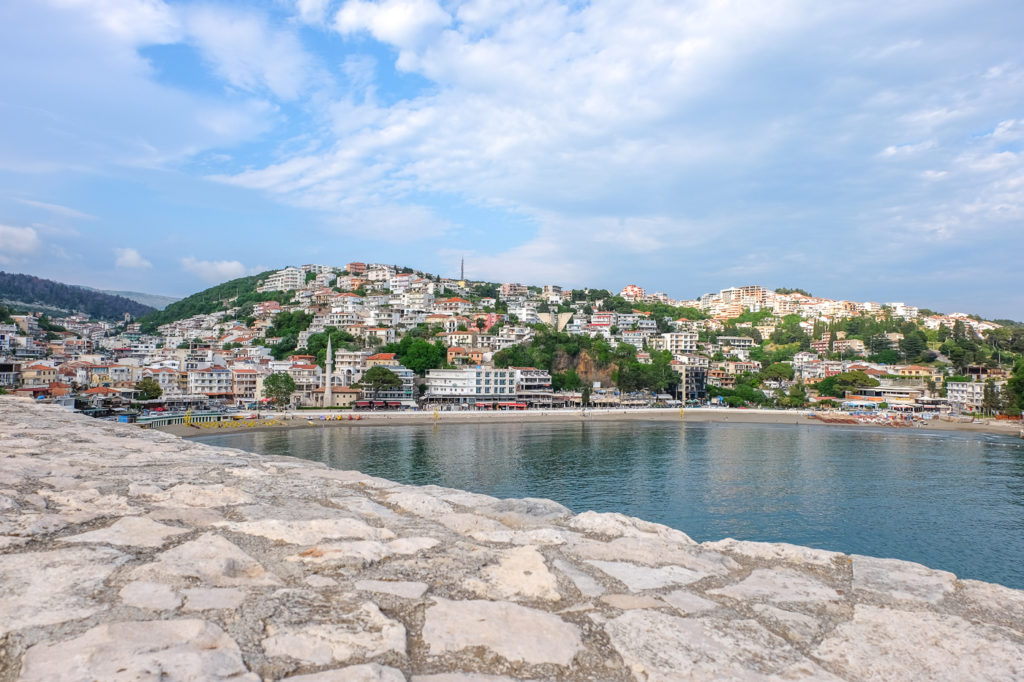
For those looking for a unique seaside town, head for Ulcinj, Montenegro. This small resort town in the very south of Montenegro is known for its sunshine, beaches, nightlife, and natural beauty. The town is very close to the Albanian border and is a bit of a crossroads for travellers up and down the coast.
Those travelling to Ulcinj are generally looking to enjoy the sunshine since the area is absolutely packed with beaches. The main beach in the town centre – Small Beach – is lovely with many places to grab a drink or coffee around. Another great beach in the area is called Long Beach which runs the coast to the Albanian border. These beaches are actually sandy contrary to many of the rocky or concrete “beaches” you might find along the coast.
There is more to do in Ulcinj than just lounge on the beach though. Near Small Beach, there’s a fortified old town that sits high atop the cliff and looks out over the Adriatic. You can catch breathtaking sunsets here and visit a small museum on the history of the area. To the west of the centre, you can walk through the famous olive tree forest where there are thousands upon thousands of olives trees. You’ll find farmers selling their olive oil at the roadside to be sure to grab a bottle or two.
To explore more nature, you can enter the Ulcinj Salinas which is an area of abandoned salt flats. The area is now a nature preserve you can explore to get a glimpse of the wild birds that flock there – including wild flamingos!
If you are looking to stay in Ulcinj, you will have no problem finding accommodation. The town is packed with holiday apartments and a number of small hotels. Some are right along the beachfront while others are tucked away up on the quiet hillside.
As for places to eat, you can stop by any of the bakeries – called Pekaras – for a freshly baked good like burek, a Balkan pastry. Up in the Old Town, there is a really good seafood restaurant called Fisherman Hari. The local fisherman himself is your waiter – and he goes out each day and serves his catch later that evening! Don’t you think this is indeed one of the offbeat places to visit in Europe?
Noto, Sicily, Italy
Lisa Rivera from Following The Rivera

In the deep south of the Italian island of Sicily is one small city with a big personality.
Noto isn’t as well known as the neighbouring city of Syracuse (Siracusa) in Italy, but it’s one place that deserves your attention. It is definitely one of the places to visit in Southern Europe.
A historic centre made up of narrow sloping streets and beautiful baroque buildings, Noto is a photographer’s dream. Corso Vittorio Emmanuele is the principal street with historic buildings on either side. At one end is a grand stone arch, Porta Reale o Ferdinandea. Though not an official entrance, it indicates the start of the historic centre from Via Napoli.
Along Corso Vittorio Emmanuele are several notable head-turners, one of which is Noto Cathedral.
Built, in a Sicilian Baroque style, the cathedral’s an impressive sight.
Its grand staircase leading to the main door sets the tone for its majestic interior. A major earthquake in 1693 caused serious damage to the cathedral, resulting in years of repairs. Another earthquake in 1990 led to the complete collapse of the cathedral’s roof 6 years later. Structural damage was cited as the reason behind it.
Re-opening its doors in 2007, it’s clear to see the contrast between the newer roof and the older body. With its distinct yellow limestone exterior and grand 15th-century revival doorways, Noto Cathedral is simply unmissable.
Other noteworthy buildings of historic significance include Ducezio Palace opposite the cathedral, and baroque church, San Corrado Fuori le mura.
Another good reason to visit Noto is for its annual flower festival. Each year in May, the Infiorata di Noto descends upon the city, transforming several streets into floral works of art.
The side street of Via Nicolaci is one of the streets that’s covered in a carpet of flowers. It’s a festival unique to Noto and attracts artists from around the country and from further afield.
Via Nicolaci is home to another unmissable sight in Noto: its wrought-iron balconies. Villadorata Palace is an 18th-century building that was once home to a local aristocrat. It’s from this building where you can see some of these unique balconies. Each one has a theatrical figure beneath, consisting of characters such as mermaids and winged horses.
Today, the palace is the home of the city’s library, as well as the setting of the exquisite boutique hotel, Seven Rooms Villadorata. Individual, spacious, and stylish, it’s an ideal, and peaceful choice in Noto’s historic centre.
A visit to Noto is an experience to cherish that leaves you with indelible memories of a visit to one of the best offbeat places to visit in Europe.
For where to eat in Noto, I can recommend Anche Gli Angeli for lunch or dinner. They serve traditional Sicilian dishes, with only the freshest ingredients. Caffe Sicilia is a good choice for breakfast, serving up tempting Sicilian pastries and good coffee.
Chernihiv, Ukraine
Inessa and Natalie from Through a Travel Lens
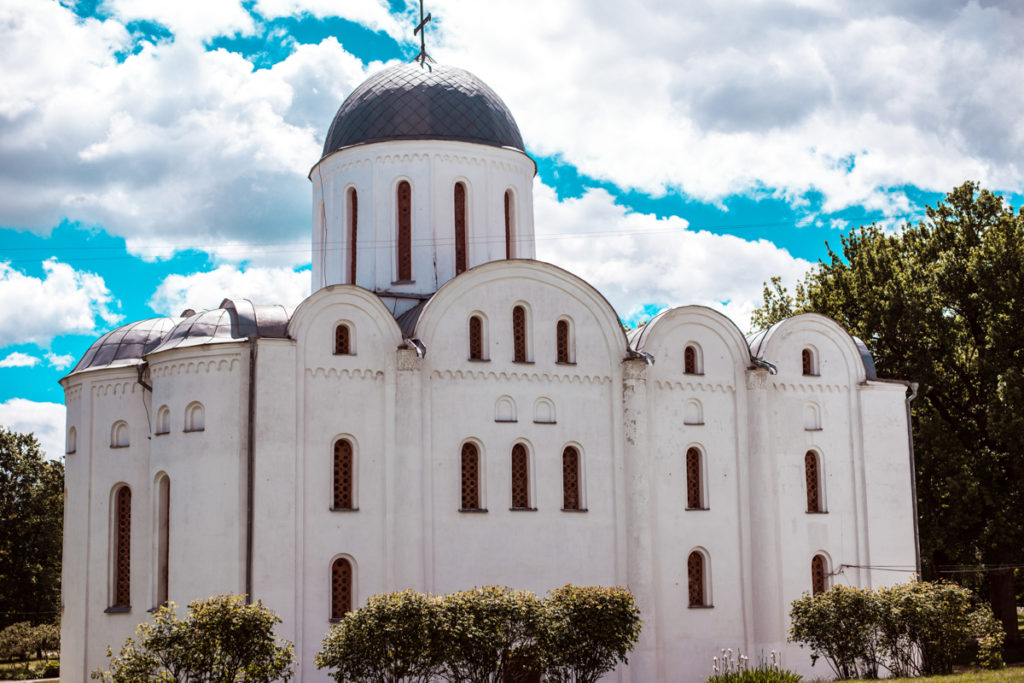
Located just a couple hours drive away from Kyiv in Ukraine, Chernihiv is certainly not the first city that comes to mind in terms of places to visit in Europe. Ukraine remains one of the most under-the-radar, as well as one of the most budget-friendly destinations of the continent. And Chernihiv quickly becomes the rising star, joining such other recommended destinations in the county, as its majestic capital Kyiv, laid-back Odesa, and authentic Lviv.
Unlike these three cities, Chernihiv is small and cosy and is a perfect day-trip from the country’s capital. A town of hundreds of churches, it preserved the Orthodox shrines from the 10th century. The list of other things to do here includes:
- Exploring the Dytynets (the remains of the ancient fortification from the times of the Kievan Rus) with its dozen of ancient cannons on the ramparts.
- Wandering an extraordinary system of underground Antonievy caves of the Orthodox necropolis.
- Climbing the old bell tower of the St. Trinity Cathedral for the breathtaking panorama of the town.
- Visiting the oldest college on the left bank of Ukraine, which dates back to the 1700s.
- Finding all the cute and charming wooden houses common for Chernihiv’s architecture in the times of the Russian Empire.
Tips from the locals
The best way to get to Chernivih is by either catching a bus from Chernihivska metro station in Kyiv or by renting a car. It takes between two to three hours to get to the town.
While recommended as a day-trip, Chernihiv is a hidden gem that many travellers find too charming to squeeze into 24 hours. There are, actually, quite a few reasons to stay for the night. One of them is to also explore the Aleshnya lakes not far from the town, with their clear blue water and old pine trees. The best accommodations in Chernihiv are all located in its historic old town. The list includes, among others, Reikartz Chernihiv and River Side Hotel.
Some of the best places to eat are also centred around the Dytynets Area. Fotel is the recommended coffee house hidden in the small and old streets off the beaten track. Varenyky and borsch, the traditional Ukrainian dishes and absolute must-tries, are served best at Balyvana Halya.
Svalbard, Norway
Aga from Worldering Around
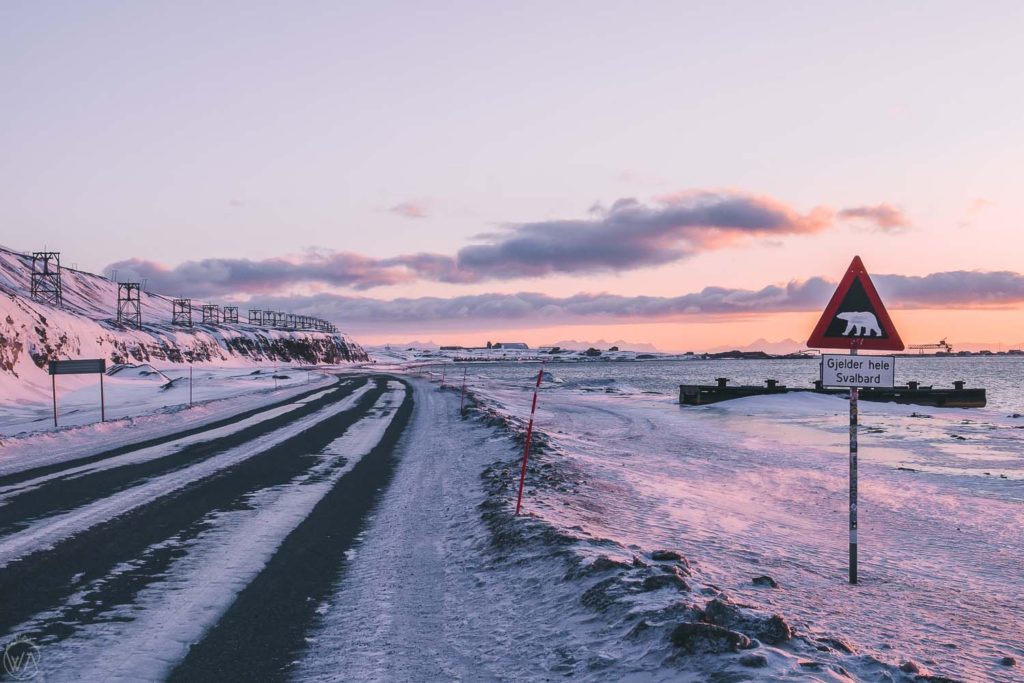
The place where there are more polar bears than people. Where most of the area is uninhabited and occupied by wildlife. Where the sun doesn’t set for half a year, and for the other half, it doesn’t rise above the horizon. Where you can experience the real wilderness and live the arctic adventure just over 1100 km from the North Pole. Welcome to Svalbard, welcome to the Arctic.
Svalbard is a Norwegian archipelago, located in the Arctic ocean, midway between continental Norway and the North Pole. Thanks to its arctic landscape and interesting nature it is a great place for the outdoor enthusiast and wildlife lovers.
There is a lot of interesting things to do in Svalbard. From hiking the mountains to discovering the wildlife, walking on the glaciers, to learning the mining history and scientific importance of the archipelago. The availability of activities varies depending on the season. Svalbard has two main seasons – polar summer that lasts from the middle of May to the end of September and winter, which is divided into two parts, polar night winter, and sunny winter.
When you visit Svalbard, you would most likely stay in the northernmost town of Longyearbyen, located on Spitsbergen, the biggest island. There are only 2000 inhabitants, a few restaurants, shops, one church, and a few hotels and Airbnbs. The local restaurants serve traditional Norwegian food, and for your evening drink, you can go to one of the cosy pubs and try the locally brewed beer from the world’s northernmost brewery.
If you visit Svalbard in winter, take the snowmobile tour that takes you to the wilderness. Available tours include the ones to the abandoned town Pyramiden, Svea mining community, Barentsburg, Ijen Radio, Templefjord, and Fjordnibba mountain, or to the east coast. You can also go skiing or dog sledging, exploring the ice caves or snow-shoeing. If you’re lucky, you can even see the Northern Lights dancing across the dark sky.
In the summer, popular activities involve hiking (even at night thanks to the midnight sun), kayaking, taking a boat trip, and discovering rich wildlife – very active at this time of the year. You can see whales, walruses, many bird species, arctic foxes, reindeer and if you are lucky, a polar bear. A trip to Svalbard is an unforgettable experience, a visit to one of the prettiest offbeat places to visit in Europe.
Rumšiškės, Lithuania
Debjani Lahiri from The Vagabong
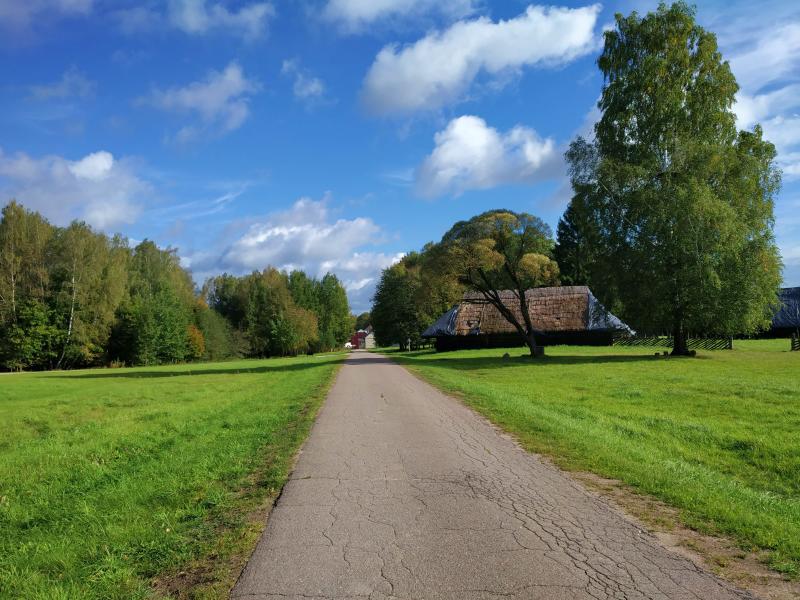
One of the most unique experiences during my visit to Lithuania, in the Baltic state of Europe was a day trip to Rumšiškės, an Ethnography Village Museum depicting the cultural and traditional side of Lithuania. Lithuania is dotted with amazing landscapes, unique architecture, and is steeped in rich history. And, most of it can be better familiarized while visiting Rumšiškės.
Rumšiškės is known for its open-air ethnographic museum, one of the largest in Europe. The museum displays the heritage of Lithuanian rural life. It has a vast collection of authentic resurrected houses and structures where people lived and worked. It shows the heritage and traditions of people living in Lithuania from different ethnographic regions such as Dzukija, Aukstaitija, Suvalkija, Zamaitija, and such other similar regions in Lithuania. The traditional houses displayed in the museum have farmsteads and big open spaces which shows farming as a major source of occupation.
There are many traditional activities which take place, including dancing, eating, games, and generally, it is very much suitable for family fun. Also, there are many live workshops and demonstrations which take place inside different zones of the museum which elucidates on the various handicraft work and ancient farming practices.
This museum was established in 1966, in Rumšiškės on a picturesque coast of the Kaunas region. It has beautiful forest and flower garden landscapes spread along 7 km surrounding areas which include some of the interesting century-old resurrected traditional houses, Windmills, wooden forges where they demonstrated, the worker rigging oil or maybe doing blacksmith’s job. And, sometimes they show it with live demonstrations. The surrounding areas are open vast and green, and hence need an ample amount of hours to fully explore the same.
Rumšiškės is about 80 km from the Capital city of Vilnius but is super close to Kaunas City. Many local buses ply from Vilnius and as well as from Kaunas. For the stay, Kaunas has various good hotel options. Hence, it is recommended to stay in Kaunas. Also, there are not many eating out options inside the museum apart from one or two small eateries. So, best is to pack someday snacks along the way.
In order to delve deeper into the lesser-known culture and traditional history of Lithuania, this is undoubtedly the best and a must-visit day trip in Europe.
Nendaz, Switzerland
Trijit from Budget Travel Buff
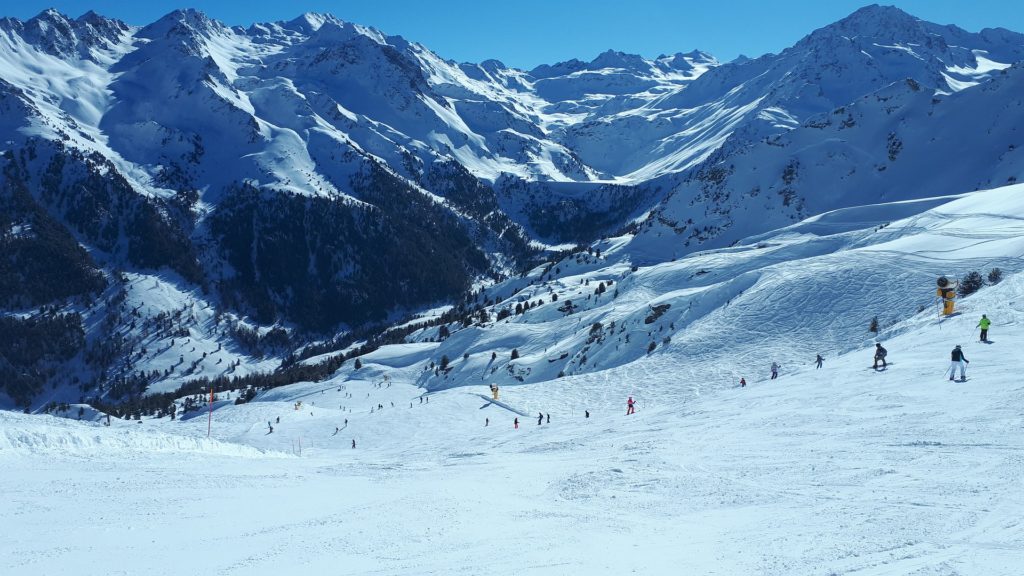
For many, Switzerland is all about Zurich, Geneva, Lucerne, Interlaken. But if you are an adventure seeker and looking for a number of outdoor activities with a beautiful panoramic view of the Alps, visit Nendaz, a pleasant alpine village located in the southwest part of Switzerland. Located in the Valais canton in between Verbier and Veysonnaz, this small Swiss village is one of the best ski resorts in Switzerland.
The nearby Geneva airport is just 2 hours driving distance from Nendaz. If you are coming from Zurich, board on a train from Zurich to Visp and from there take another train to Sion and reach Nendaz by bus or taxi. Nendaz is beautiful at any time of the year. There is no offseason here. During summer times, the weather is very charming and offers beautiful views of blue skies, lush green valleys, and snow-capped mountains. You can visit the spa or hike around the Tracouet near Nendaz in the summer.
The trail is extremely scenic and offers an incredible panoramic view of the surrounding mountains of Alps. If you are brave enough, mountain biking could be the ultimate experience in Nendaz. I will recommend renting an e-bike if you are not experienced in mountain biking. However, winter is more popular in Nendaz. It is a paradise for snow lovers, skiers, and adventure enthusiasts. Nendaz ski resort offers different levels of slopes for all types of skiers. There are a total of 50 operational ski lifts with 220 km long ski runs. Affordability is another reason behind its popularity as a ski resort.
Where to stay
Switzerland is one of the most beautiful countries in Europe but an expensive country, however, surprisingly you will find many hotels and chalets which are comparatively cheaper and won’t break your bank. You can stay in Gîte de Planchouet and can expect an outstanding view from the window.
What to eat
Eating out in Switzerland is quite expensive. You can eat at the above-mentioned hotel restaurant. Whatever cuisine you can choose but you must try authentic Swiss Fondue and Amuse-bouche.
Nendaz is a lesser-known gem of Switzerland and a lovely offbeat places to visit in Europe.
Zakopane, Poland
Reshma Narasing from The Solo Globetrotter
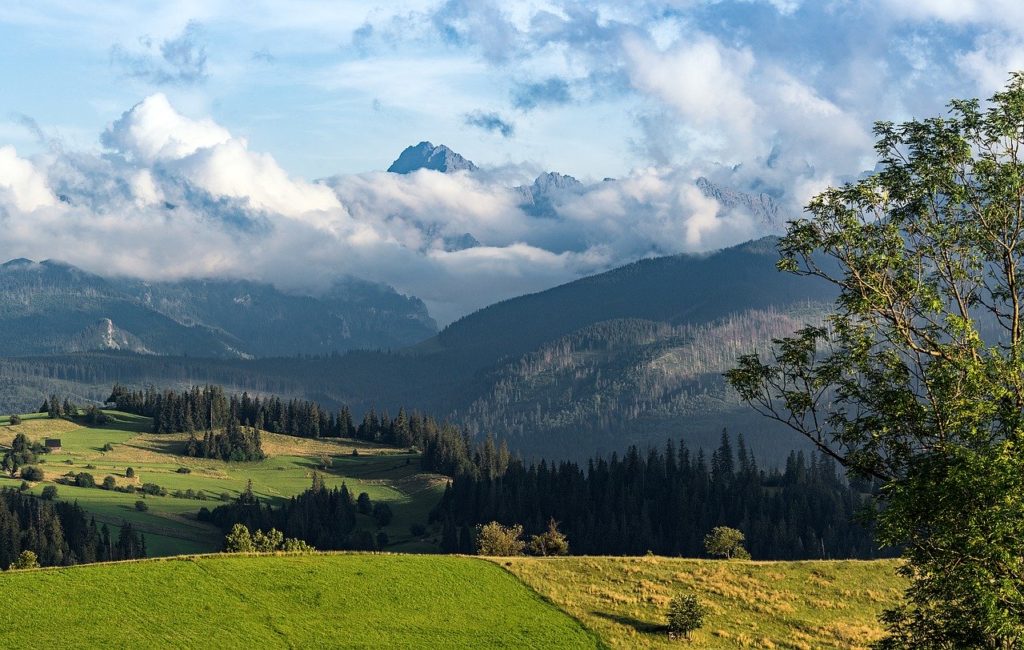
The town of Zakopane, located in the valley at the foot of the Tatra Mountains and Gubałówka Hill, is one of the unique places to visit in Europe. Zakopane is known as the winter capital of Poland. It is a famous resort town as well as the base for hiking and many winter adventure activities including mountaineering and skiing.
This post-card like beautiful town receives over 2.5 million visitors every year, most arriving around winter, especially during Christmas and the New Year eve for skiing. The entire village celebrates the arrival of winter with traditional dance performances, cooking roast lamb, and procession of decorated sleighs.
Zakopane is one of the most ancient towns in Poland with inhabitants settling here since the early 17th century and is considered the centre of Goral culture. Initially, Zakopane was an industrial town, but the construction of cable car and skiing areas made it into one of the country’s famous tourist destinations since the 1950s.
Take the funicular ride to the top of Gubałówka hill, from where you can see the stunning panoramic views of the Tatra and beyond. Walk along Krupówki, the most famous street in Zakopane, which is also a hotspot for shopping. The road has plenty of local restaurants serving delicious Goral food, which you should try on your visit. In summer, you can also go quad biking and dirt-racing.
If you want to enjoy skiing, head to Kasprowy Wierch and Gubałówka, the two most noted skiing areas that offer plenty of beautiful cross-country trails that you can enjoy. Other things that you can try are snowmobiling, snowshoe walks, and Ice skating. If you are travelling with kids, sleigh rides are recommended. If you want more adventure, you can even try ski jumping.
If you are visiting Zakopane in summer, which is also one of the great times to visit, you can hike the upper Tatra mountains, where there are plenty of beautiful trails that lead to multiple viewpoints. You can do some of these in a single day or choose longer paths if you wish to camp.
The streets around Krupówki have plenty of accommodation options. If you want a resort-villa experience, stay at Willa Cztery Strony Świata, close to the ski lift.
A visit to Zakopane leaves one with beautiful memories of the visit to one of the most beautiful and offbeat places to visit in Europe.
Pontresina, Switzerland
Sarah Barthet from Dukes Avenue
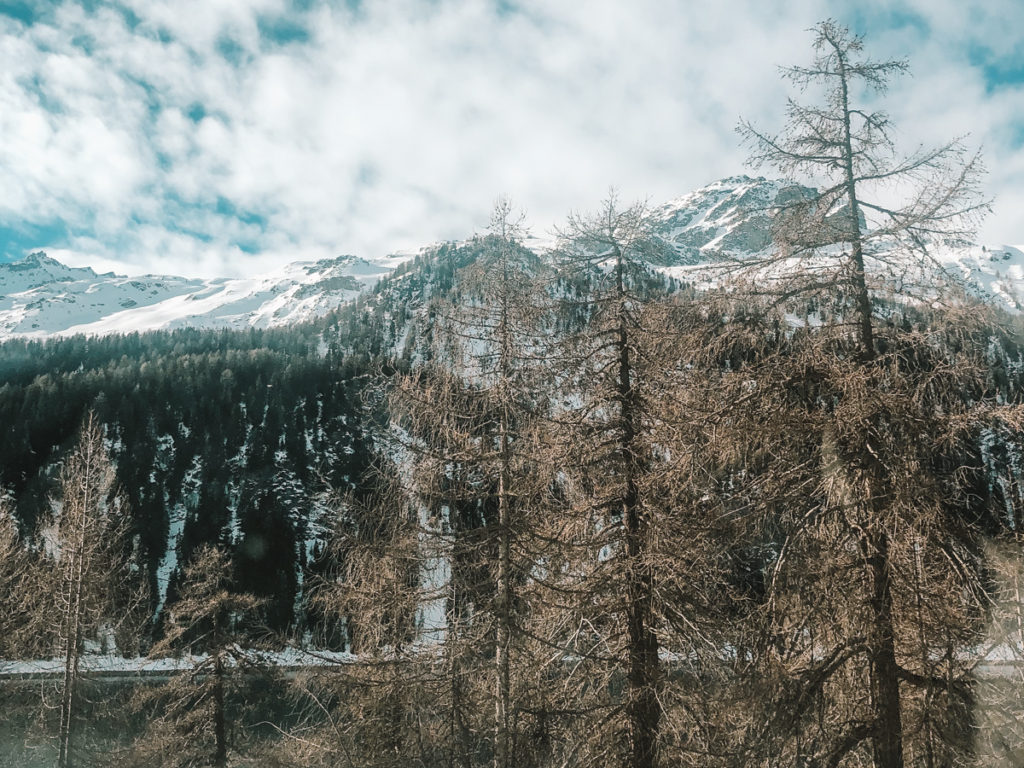
The Swiss town of St Moritz is known all over the world as the prime European destination for luxury ski holidays. What is not so well-known, however, is the sleepy town of Pontresina in Switzerland, a mere 5-minute drive away! Pontresina may not have the same reputation as its glitzy neighbour, but not because it has anything less to offer. It too is located in the Engadine valley, and if travelling to the region for skiing, travellers could very well ski on the same slopes as those staying in St Moritz.
So why stay in Pontresina and not St Moritz if that is more renowned? Whilst St Moritz is all about overstated opulence, Pontresina is more about understated glamour. St Moritz is wonderful for a weekend break, yet for those longer winter holidays, Pontresina will give you a true untouched taste of Engadine, whilst being close enough to absorb the St Moritz champagne atmosphere if desired. Pontresina is definitely one of the loveliest offbeat places to visit in Europe
There is plenty to see in Pontresina too, such as the Morteratsch Glacier, the Alpine Museum Pontresina, the beautiful trail of Val Roseg, and a plethora of scenic lakes scattered around the municipality. Naturally, it is most popular in the winter season and during this time, visitors can enjoy almost every winter sport – from skiing and snowboarding to ice-skating and curling.
Pontresina can be reached by rental car from Milan, Zurich, or Basel, and depending on the weather, it is advisable to use the car train from Vereina tunnel at Klosters in Lower Engadine. Alternatively, it is possible to take the train from Chur and it is known to be one of the most beautiful and scenic routes in Europe thanks to its loop tunnels. The final option is to travel by air to Engadine Airport, however, this solely caters to private jets. If the budget allows, this is the easiest way to reach both Pontresina and St Moritz.
For luxury accommodation befitting of the location, Grand Hotel Kronenhof comes highly recommended. Not only is it the only 5-star hotel in Pontresina, but it is easy to argue that there is cause not to leave the hotel. With its own bowling alley, private ice-skating rink, luxury spa, and restaurants that serve both canard à la Presse and vegan cuisine, there is something for everyone to enjoy!
Zamosc, Poland
Claire from Curious Claire
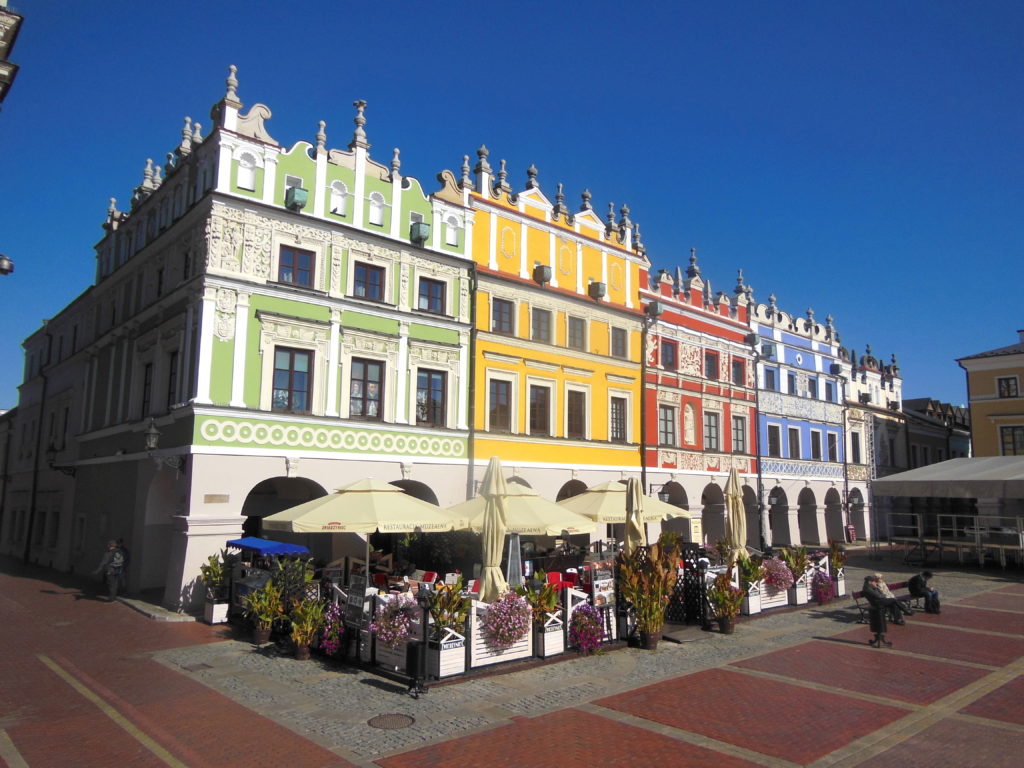
Poland is a great country to visit but sadly most visitors to Poland will only ever visit Warsaw and Krakow, missing out on hidden gems such as Zamosc. Located in South East of Poland, this beautiful 16th Century Renaissance town with fortification walls is so wonderful that is was added to the UNESCO World Heritage list back in 1992.
Zamosc can be conveniently reached by train from Lublin which is a beautiful city in Poland to visit. The train to Zamosc from Lublin takes about 2 hours on the Przewozy Regionalne network. If you’re planning on coming from Warsaw you’ll need to get a train to Lublin (just over 2 hours) and change for a train to Zamosc.
There’s plenty of things to do in Zamosc but the main attraction that entices people to visit is the colourful Armenian Tenement Houses in the market square. The architecture is really spectacular and gives the new vibrantly colourful Copenhagen harbour close competition. With several restaurants in the market square overlooking those colourful houses as well as the quaint Town Hall, it’s easy to enjoy lunch with a great view.
Other attractions worth checking out in Zamosc are the stunning cathedral built between 1587 and 1598. Make sure to go inside to see the beautiful interior. The bell tower which was built several centuries later can be climbed up for stunning views of the town in the summer months.
While the town of Zamosc is small enough to explore in a day, the trains are limited so you might want to plan to spend the night. While small in size, the town does have several hotels to choose from as well as having a couple of spa hotels and even a hostel.
Kotor Bay, Montenegro
Clotilde from A Princess Travelling With Twins
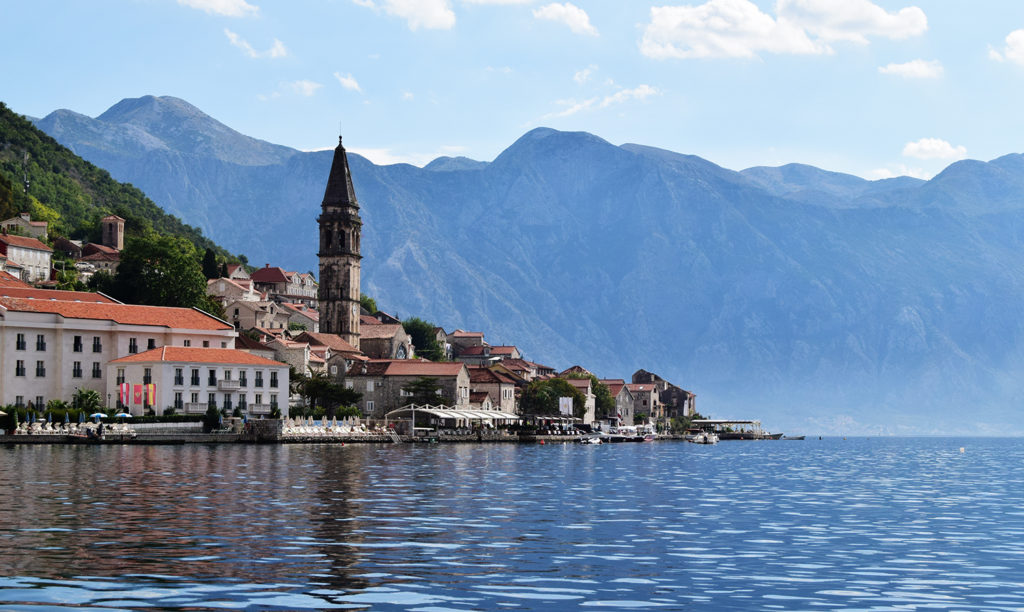
Looking at a photo of Kotor Bay it is not surprising that some people wonder if it is a fake panorama or a movie set, everything looks perfect.
But no, it is an enchanting place that seems painted by the skilled hand of an artist. Located in Montenegro, the bay of Kotor overlooks the Adriatic Sea but closes on itself as if it wanted to hide from the crowds of tourists to preserve its beauty.
Yes, this corner of paradise is not yet affected by over-tourism. Although during the summer, cruise ships during the day bring thousands of people to the port of Kotor, you can still appreciate real villages.
Kotor bay is full of things to do and places to visit and should be the first stop for any Montenegro road trip. The bay of Kotor is very large with pretty villages all lined up along the coast, but the most picturesque part is certainly the stretch between Kotor and Perast.
Kotor is a small fortress defended by the mountains and bathed by the sea, hidden from view inside by its high walls. The ancient centre is perfect for walking, preferably after 6 pm when the cruise ship tourists have left and the calm returns among the narrow and pretty alleyways.
In contrast, Perast is a very small and refined village completely lying on the sea, where you can stop for a romantic candlelit dinner with the sea as a musical background.
Along the bay, there are several other villages that can be easily visited such as Risan where you can admire some ancient Roman mosaics. You can also go a little further and still easily reach other important tourist attractions such as the Ostrog monastery, the fairytale Skadar lake, or in just a couple of hours you can even reach the pearl of the Adriatic: Dubrovnik.
There is no shortage of accommodation, Kotor and Perast are the most obvious choice. Take refuge in Perast if you want a quiet and refined place to wake up and have breakfast while admiring the usually calm sea, like a lake. If you want a more energetic environment then Kotor will be the right choice.
The only important thing to remember is that in both places you will have to look around a bit to avoid the tourist restaurants and find the simpler and quieter places where locals eat so you can really appreciate the freshly caught seafood that is grilled, boiled, or stewed.
Karlovy Vary, Czech Republic
Sabine & Sean from The Travelling Chilli
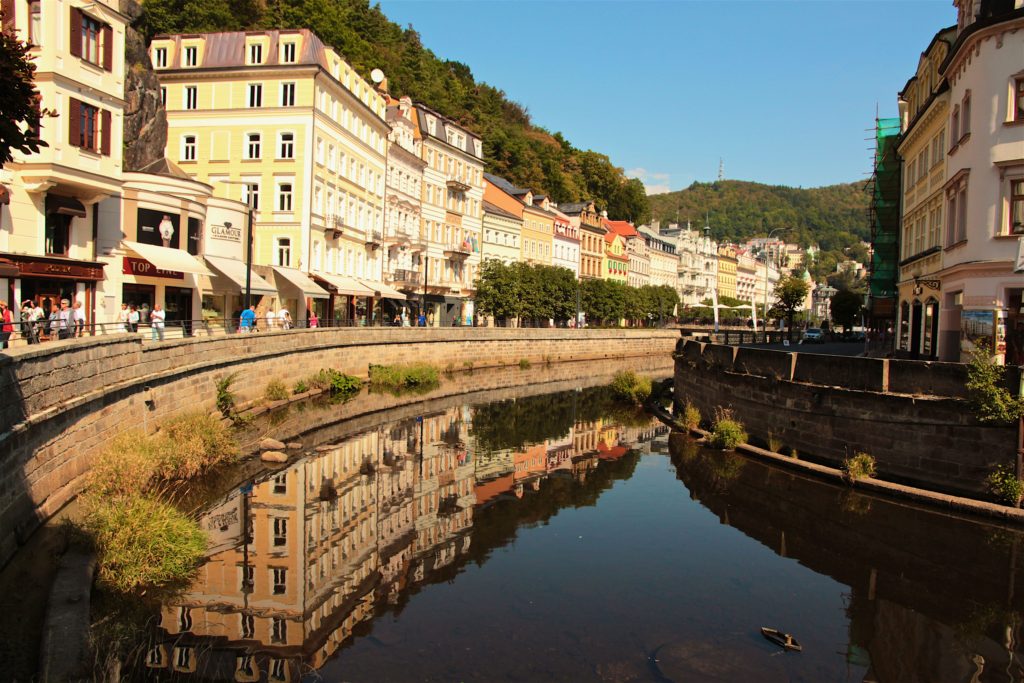
Karlovy Vary is a beautiful historical town located around 130 km to the west of Prague in the Bohemia province of the Czech Republic. Due to its proximity to the German border, Karlovy Vary is often referred to by its German name, Karlsbad. It is one of the most interesting places to visit in Eastern Europe.
Karlovy Vary has been a very popular tourist destination in the past few centuries because of the natural thermal spring waters. They were first discovered in the 14th century by Charles IV, hence the name Karlovy Vary (Karl is the Czech name for Charles).
Over the centuries, both commoners and aristocrats alike have visited Karlovy Vary in order to indulge themselves in the healing waters. The politicians, musicians, and aristocrats that visited included but were not limited to the likes of Frédéric Chopin, Ludwig van Beethoven, Wolfgang Goethe, Franz Kafka, and Karl Marx.
The hot springs are not only good for bathing as it is also possible to drink from them at the various fountains in town. Consuming the water, preferably by means of the traditionally designed porcelain cups has various curing effects. You can take a leisurely stroll past all 12 springs while discovering the rest of the town at the same time.
Further interesting things to do in Karlovy Vary is to discover the stunning architecture of the buildings. Even though the town was built over several centuries, the main architecture dates from the period circa 1800 to the first half of 1900 and is mainly of the Renaissance style. The grandeur of the colourful buildings is very unique and inspiring.
Don’t forget to visit the Becherovka museum, the Moser glass museum, and the Grandhotel Pupp. It is said that the inspiration for the movie ‘The Grand Budapest Hotel’ came from this hotel in Karlovy Vary. When visiting Karlsbad, why not stay a night at the Grandhotel Pupp? It will be an exclusive experience any way you look at it.
Karlovy Vary is often visited as a day trip from Prague, but the town also has more to offer as a multi-day stopover. Karlovy Vary is located in a valley with lots of forests and mountains surrounding the town. It’s a beautiful hike up to some of the viewpoints with an almost birds-eye view of the buildings below and how the town is laid out along the river. One of the best places to do this is at the Diana Observation Tower.
Kronborg Castle, Helsingør, Denmark
Derek and Mike from Everything Copenhagen
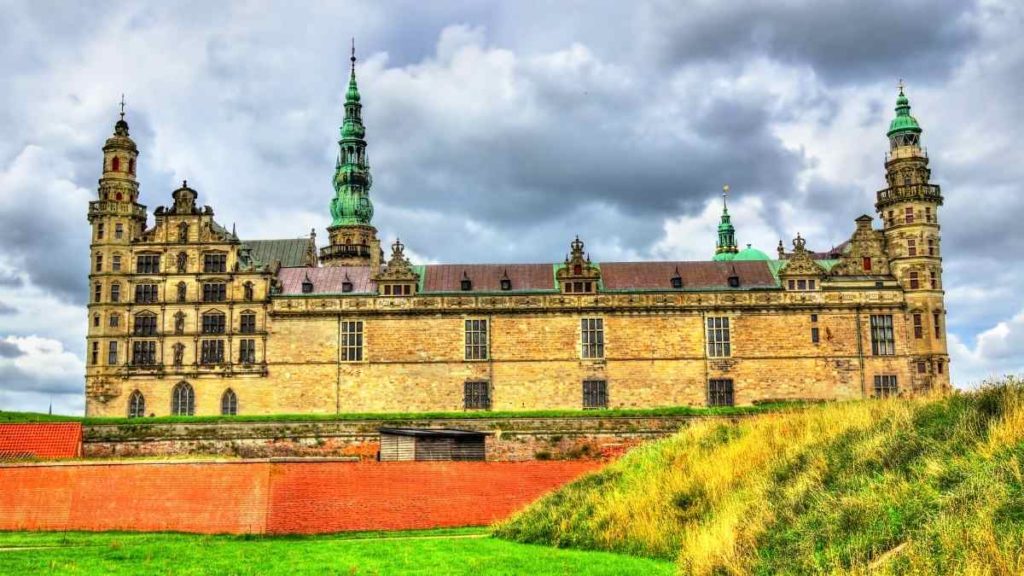
One of Europe’s most unique destinations lies at the confluence of the North Sea and the Baltic Sea. This strategic location is known as the Øresund Strait between modern-day Denmark and Sweden, however, lands on both sides were Danish for many years. The two Scandinavian powers fought several wars for control of this important region. It changed hands, on and off until the 18th century when it last changed to Swedish control.
During the Danish Golden Age, Denmark included southern Sweden and the kingdom grew wealthy by enacting Sound Dues, a fee charged to all merchants sailing in and out of the Baltic Sea. Fortified castles were erected on both sides of the sound to enforce the tolls and the powerful Danish navy was based on the Danish side in the city of Helsingør. Kronborg Castle is the larger of the two fortifications and it was a residence of Danish royals for most of this period.
Many people are unknowingly familiar with the famous castle in Helsingør, but it’s not necessarily from their history books. The source of the knowledge is from British literature – in Shakespeare’s tragedy, Hamlet. One of the most well-known lines, ‘there’s something rotten in Denmark…’ refers to conflicts in the Danish royal court. It’s believed that Shakespeare himself visited Kronborg Castle in Helsingør because records of Danish kings hosting acting troupes from London have been kept over the centuries.
Today, you can visit Kronborg Castle and walk the halls that once hosted Danish nobles, Elizabethan English acting troupes, and possibly even William Shakespeare. In the summer months, Shakespearean actors perform scenes from Hamlet in the castle including sword fights and the famous banquet scene in Kronborg Castle’s great hall. There are guided tours daily and it’s fascinating to tour the royal apartments, chapel, dungeons, and kitchen. Visitors can climb the tower cannons for a perfect view of Sweden in one direction and the picturesque Danish town below them.
The castle is a UNESCO World Heritage site and Helsingør is home to the Danish Maritime Museum and the Øresund Aquarium. There is a street food hall that’s open on weekends and it’s a nice alternative to the bustle of nearby Copenhagen. A mid-range hotel in Helsingør is easy to find like the Madam Sprunck Hotel.
Dresden, Germany
Cory Varga from You Could Travel
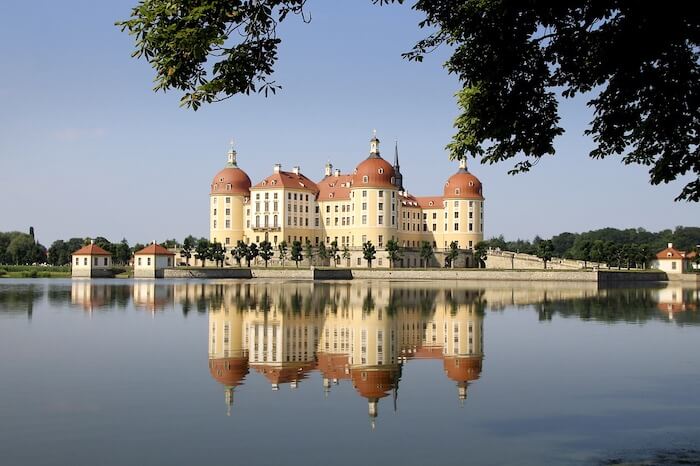
Dresden is one of the most incredible cities to visit in Europe. Located by the river Elbe, Dresden in Germany is sometimes referred to as the Florence on the Elbe, a rather fitting name given its baroque centre.
Visit the Altstadt (Old Town) and marvel at a myriad of opulent buildings, museums, and cultural hotspots. Elegance is what defines Dresden’s streets.
But if you want to enjoy youthful alternative quarters, simply cross one of the many bridges and head over the Neustadt (New Town) where you’ll find street art, social corners, and funky cafes where avocado on toast is the norm.
Take a stroll along the Elbe and discover Loschwitz, a village-like enclave near the river, with fairytale-like timber frame houses, gorgeous gardens, and small souvenir boutiques.
If you are a foodie traveller, Dresden won’t disappoint. Whether you want to enjoy traditional German meals in Altstadt, alternative cuisine in Neustadt, or elegant cakes near the Blue Wonder Bridge, you will be spoilt for choice.
Dresden is known for the tragedy that enveloped it during World War II. The grand and beautiful baroque sites were reduced to heaps of rubble. The scars from 1945 are still discernible, but rebuilding has taken place which is significantly much more than any other city. Dresden gracefully rose like a Phoenix from its own ashes. The city of Dresden came into its own and is today reckoned to be one of the loveliest cities, not only in Europe but the entire world.
You could roam around for days and still find interesting historical references and fascinating artistic creations. Altstadt represents a free ticket to going back in time, for a chance to see how Dresden looked like before the war.
We recommend staying in one of the gorgeous hotels located in the Alstadt so you can enjoy the sophisticated experience of the city centre. If nature calls you and you want to be closer to Saxon Switzerland for day trips, then it’s best to book a hotel or a quaint German villa near Loschwitz. Loschwitz is just 10 minutes away from tram from the centre, or a delightful boat rides away.
Dresden has several vineyards along the river Elbe so you can enjoy your evening wine tasting with a fantastic view over the cityscape.
The Lake District, United Kingdom
Demi Johnson from Around The World With Her
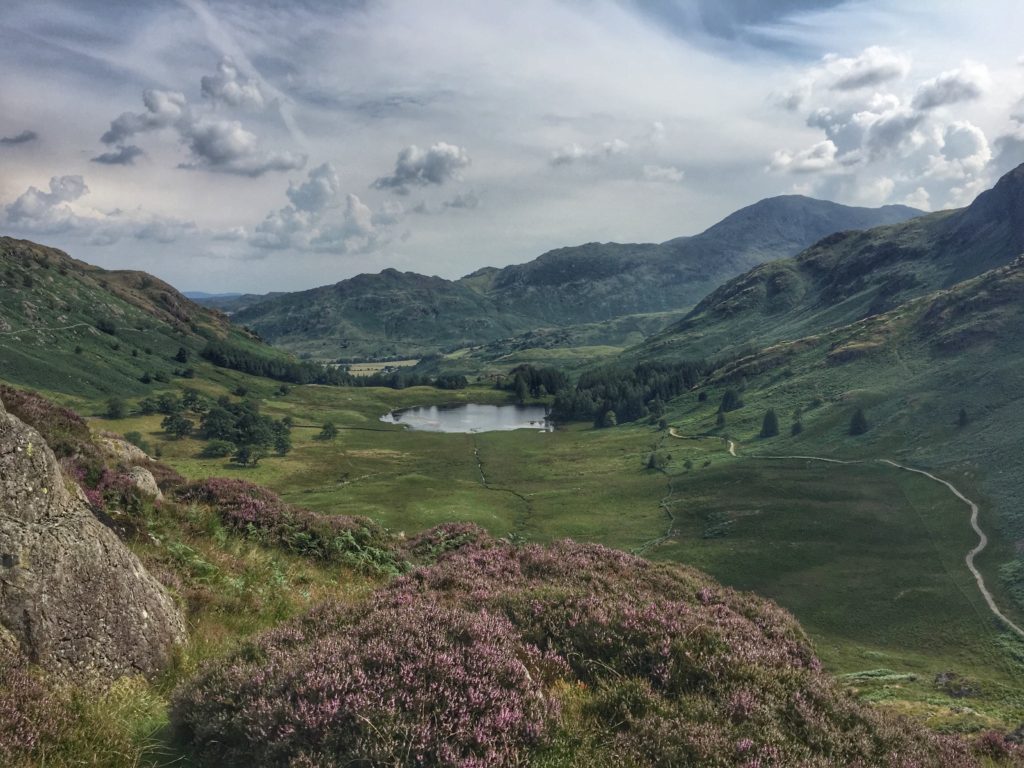
Many people never get any further than London when they visit the UK. This is a real shame, as up in the North West is an amazing place – The Lake District National Park. This huge, UNESCO world heritage site is an area of outstanding natural beauty. Here you will find England’s largest lake – Windermere. Taking a trip on one of the old fashioned steamers that run up and down the lake is a popular activity. It is a great way to get amazing views of all the surrounding mountains. You can also rent a rowing boat if you’d like to explore the lake independently! You can also hike up the highest mountain in England – Scafell. Although the highest, it is not the most challenging, and most people with a relatively good level of fitness can reach the summit.
The area is famed for the quaint small towns. There are plenty of things to do in Ambleside, Windermere, or any of the other popular Lake District towns. The area has brilliant cafes and restaurants, with a real focus on local produce. Accommodation is usually local style guest houses full of personality. You won’t find a Premier Inn or Travel Lodge here – this is all about unique experiences!
For the more active or adventurous, you can hire a bike. There are many mountain biking trails in the Lake District. there are also outdoor adventure activities, such as Go Ape where you can swing through the treetops. The area is an outdoor enthusiasts dream. Many of the locals enjoy climbing, and Keswick and Ambleside have climbing walls that offer lessons!
The area has a lot of history too. The famous poet William Wordsworth lived here. His house in Grasmere is now open to the public so you can visit and learn all about his life. Beatrix Potter also lived here. She is a very famous writer of children’s books. Her house near Hawkshead can be visited too. If you do make it to Grasmere, then you must try Grasmere gingerbread. A famous biscuit, the recipe has been a closely guarded secret for many years!
Schafberg Mountain, Austria
Darek from Darek And Gosia
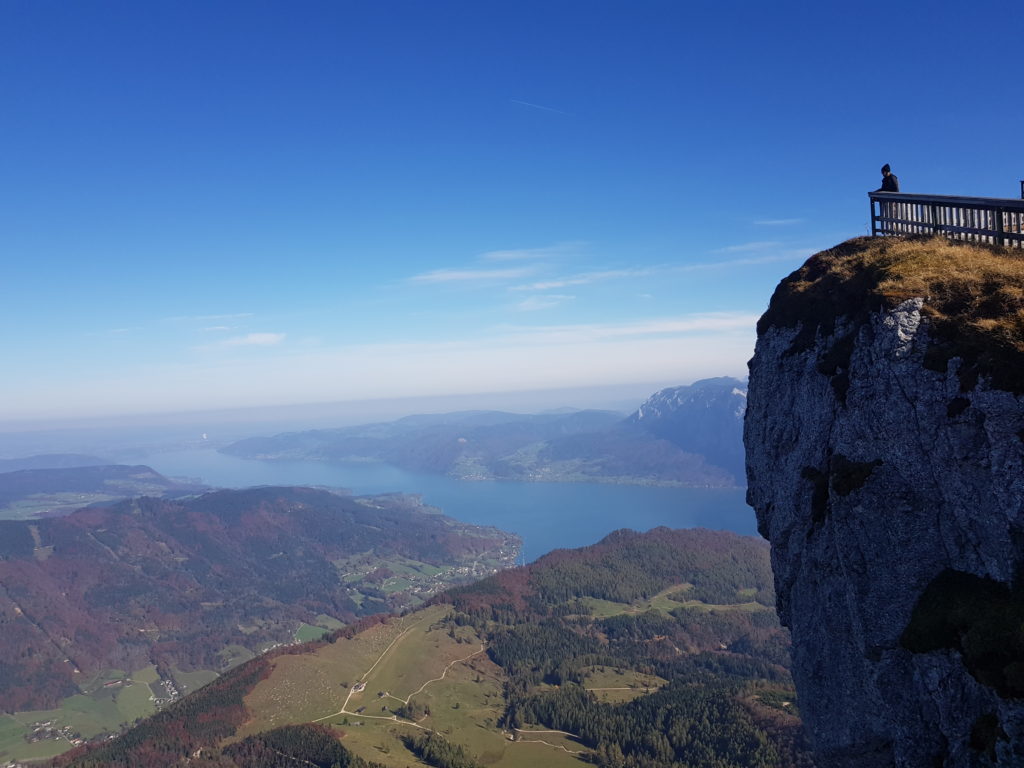
There are many places that are worth visiting in Europe like famous cities or beautiful beaches. But if you have seen all the top attractions in Europe you will be delighted to hear that there are still endless opportunities to see something new and unique. There is no dearth of hidden gems in Europe. One of the most unique and lesser-known places is located in Austria and it’s called Schafberg mountain!
Just a few dozen kilometres from Salzburg, the picturesque land of Salzkammergut begins. The area is stunning, and it is a perfect combination of post-glacial lakes and medium-high rocky peaks – a paradise for hiking and nature lovers.
Among the many routes offered by this region, one of the most interesting ideas is hiking to the top of the Schafberg mountain. Towering over St. Wolfgang, this peak is really impossible to confuse with any other of this region! The hike to the top is a bit challenging as it has about 1200 meters of elevation, so you really have to be fit in order to get there. But the views accompanying it will certainly be sufficient compensation for every drop of sweat.
If hiking is not for you then you can get to the top of Schafberg on the narrow-gauge railway. Built, in 1893, is the steepest steam train in Austria – a great way to visit the mountain.
After a trip to Schafberg, you should go for a walk in St. Wolfgang. It has lovely streets lined houses having roofs that are sloping and big balconies. This is a feature that is typical of the region. You will find here a lot of small shops where you can buy handmade souvenirs.
A walk by the lake, which has a fantastic turquoise colour, is also a great idea. You can end up soaking your feet and even bathing in the summer. In addition, there are summer houses on stilts with their own ladder directly into the water! Cruise ships have been sailing the lake for over a hundred years. It is possible to combine visiting Schafberg mountain and sailing on a cruise on the same day.
Austria can be expensive but if you are looking for an affordable place to stay Russbachbauer could be a good idea. It is an alpine-style house, wooden panelled, with garden and beautiful surroundings.
Curonian Spit, Lithuania
Jeremy from Cultura Obscura
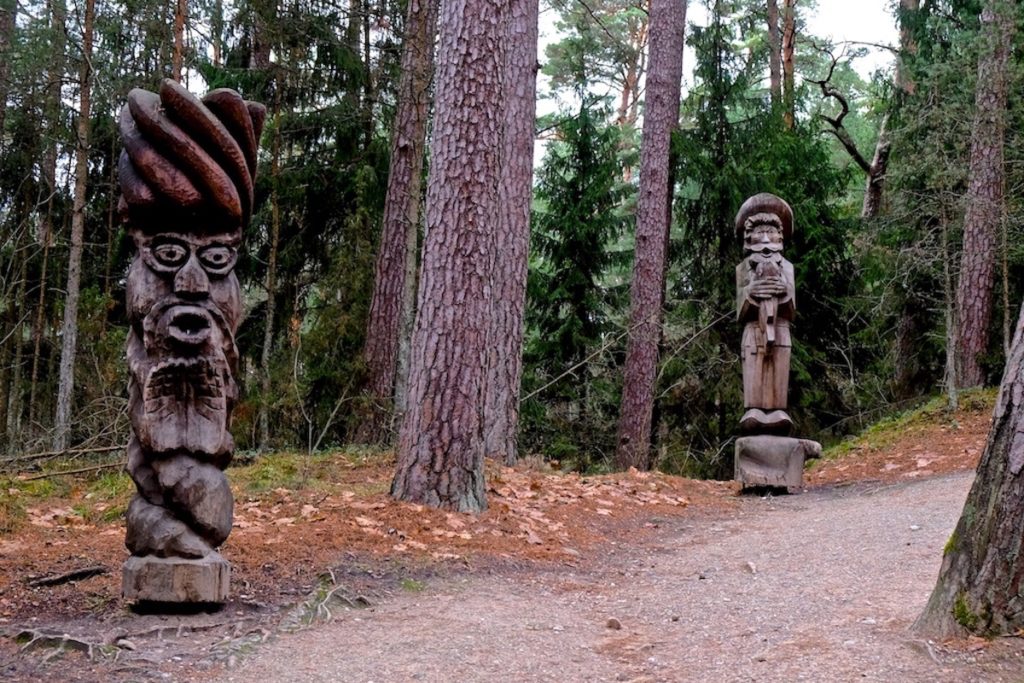
The Curonian Spit in Lithuania is a 61 mile-long curved collection of sand dunes perched between Lithuania and Russia on the edge of the Baltic Sea. Jointly owned by both countries, this narrow spit of land is held in high regard as a refuge of clean nature. Since 2000, the Curonian Spit has been a designated UNESCO World Heritage Site, and a much sought after tourism destination for ramblers, hikers, sailors, and nature enthusiasts, but it still remains one of the offbeat places to visit in Europe.
According to Lithuanian folklore, the Curonian Spit was created by a girl named Neringa, in order to protect the inhabitants of the mainland from the fierce winds of the Baltic Sea. Legend says that Neringa was a Lithuanian giantess who despite her size still had a gentle and kind heart. When the seas became rough, she gathered up huge amounts of sand in her skirt and poured them out across the shoreline, thus saving the mainlanders from being washed away. What remains there now has become the Curonian Spit, and in her honour, the Lithuanian side is named as the Neringa municipality.
Anyone looking for outdoor activities and walking trails will have no trouble finding things to do here. One unique element of the Spit is that it is home to the highest drifting sand dunes in Europe, with some reaching 200 feet in height. Tourists attracted by the mythological origins of the Spit can enjoy the Hill of Witches in the shoreline holiday town of Juodkrantė. This series of woodland trails features a large collection of wooden carvings of all manner of characters and creatures from literary tales and supernatural stories.
Those looking for the best accommodation should head to Nida on the Lithuanian side – this family-focused holiday resort town regularly receives hundreds of thousands of tourists each summer. One more famous holidaymaker to this town was the Nobel Prize-winning author Thomas Mann, who frequented a holiday home he had built in the area during the 1930s.
The Curonian Spit can be reached from the Lithuanian side through the city of Klaipėda. Buses leave regularly from the city centre and cross over the small stretch of water separating the Spit from the mainland via a regular ferry. From the other direction, the Spit can be reached from Zelenogradsk on the Russian side, where it is joined directly by land.
Mostar, Bosnia and Herzegovina
Kami from Kami and the rest of the world
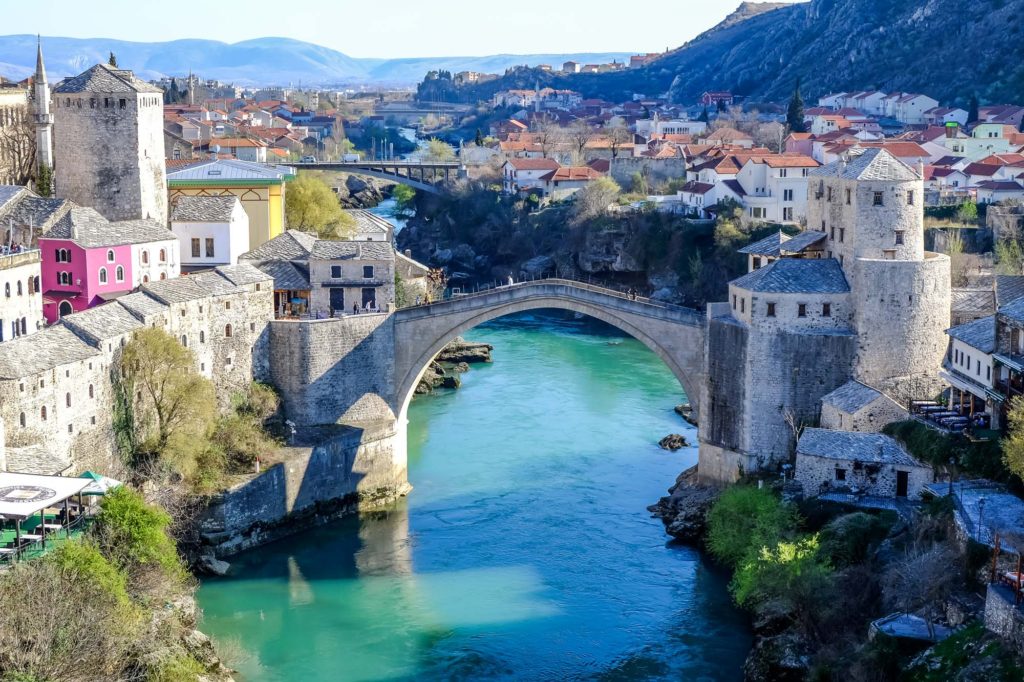
Mostar, Bosnia and Herzegovina, might be among the most popular destinations in the Balkans but it is such a unique place to visit. The town is famous for its Ottoman bridge above the green waters of the Neretva river and that’s the main reason to visit Mostar. Although the bridge we can admire now is the rebuilt version of the original one from the 16th century (it was destroyed in 1993 during the Balkan War) it is still one of the most stunning bridges you will ever see. One of the most offbeat places to visit in Europe.
But there are many more things to do in Mostar. The old town is small but very charming with cobbled lanes and small houses. It is also a perfect place for souvenir shopping at very affordable prices. If you are not claustrophobic and not afraid of heights you should climb to the minaret of Koski Mehmed-Pasha Mosque and this is a very unique attraction because, from the top, you can admire one of the best views of Mostar and surroundings.
Many visitors focus only on the Old Bridge and the nearby part of the city but you should venture further into the town and see how vibrant Mostar really is. You will find there great street art scene, quirky monuments like Bruce Lee, numerous cafes where local people hang out, and, sadly, still many destroyed buildings after the 1990s War. Mostar is still divided into the Bosniak and Croat part and you might notice some tensions when wandering around.
Getting to Mostar isn’t too difficult. You can take the bus or train from Sarajevo, the capital of Bosnia and Herzegovina. The journey takes around 2 hours and goes through some really breathtaking landscape. Mostar is also a popular day-trip destination from Dubrovnik, the famous seaside city in Croatia.
When visiting Mostar be sure to try Bosnian coffee – it’s super strong and thick, often served in beautiful pots. Bosnia and Herzegovina are famous for grilled meat, you can try it in one of many restaurants in the old town – choose the one with the view over Old Bridge. You should stay overnight in Mostar – in the evening the old town is such a quiet place and that’s when you will fully see what a unique place this is!
Giethoorn, Netherlands
Tanayesh Talukdar from Shoestring Travel
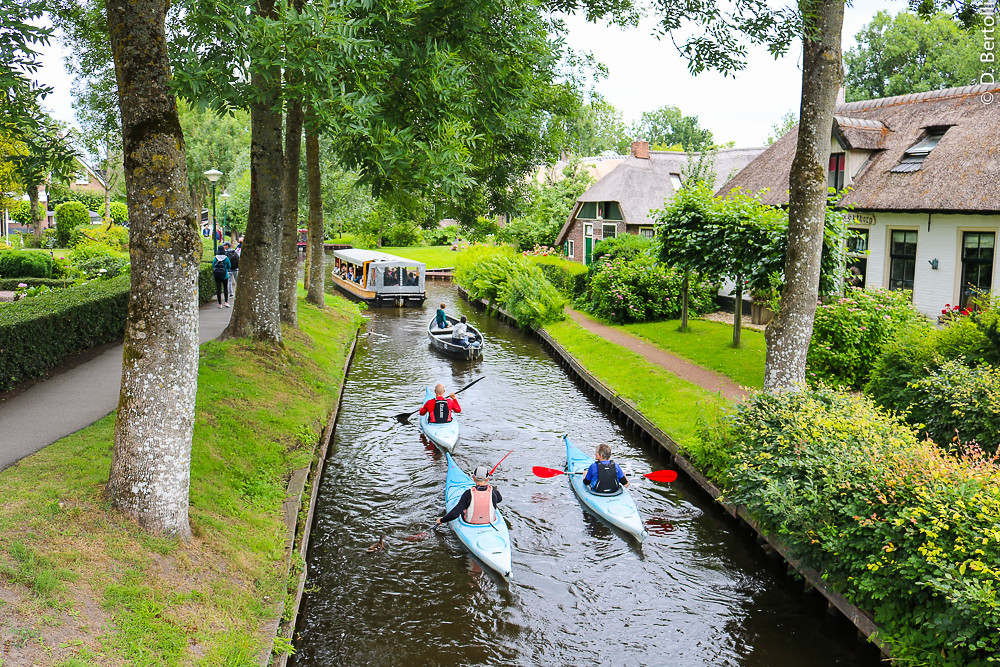
Giethoorn, a small Dutch village in Overijssel which is a great place for a short and unique trip in the Netherlands. If you are looking for rowing, then the water canals at Giethoorn are perfect. They also remind you of Little Venice of London.
There are various ways to reach Giethoorn you can fly into Amsterdam and head to Zwolle or you can take the train to the city and rent a car when you get there, or just get a vehicle from the get-go and drive the whole way. From Amsterdam, you need to take highway A1-E231 to the A28-E232. Driving time to Zwolle is approx. 90 minutes. The best months to visit are April, May, June, or September, and keep in mind that weekday visits may be best.
The village is enchanting in its own way. It is embellished with beautiful lakes, forests, farms, and reed beds. The thatched-roof huts and wooden bridges lend an old-world charm to the place. This village is also known as dutch Venice and the cutest part is Giethoorn isn’t accessible by car. So one needs to walk along with the entire village or take whisper boats at some places.
There are a few nice Airbnb in Giethoorn as well as a number of hotels from four-star hotels to budget hotels a little way out of the town centre (but still walking distance). Rooms include breakfast and these hotels also rent bikes and boats directly. There are also quite a few little cafes and restaurants lining the canals, do not forget to check them out for a meal or just an ice-cream perhaps! There’s also a Dutch cheese shop which is a must-visit if you are into cheese. To save on money you can also just bring picnic supplies from the supermarket and plop yourself down next to the canal.
The village is so beautiful like a fairyland that you can just walk around admiring over how cute the place is! There are also a lot of things one can do here like take a boat cruise. There are bigger boats that take you around the canals of Giethoorn, learn about the town from the guide. These tours in covered boats are also wheelchair accessible and kid-friendly. It is also home to a couple of small museums like ‘t Olde MaasUus Museum which teaches about the history of Giethoorn and often has actors in traditional clothing to do so. This mystic village has many more to explore so just visit and enjoy one of the most enchanting and offbeat places to visit in Europe.
Alberobello, Italy
Wendy Werneth from The Nomadic Vegan
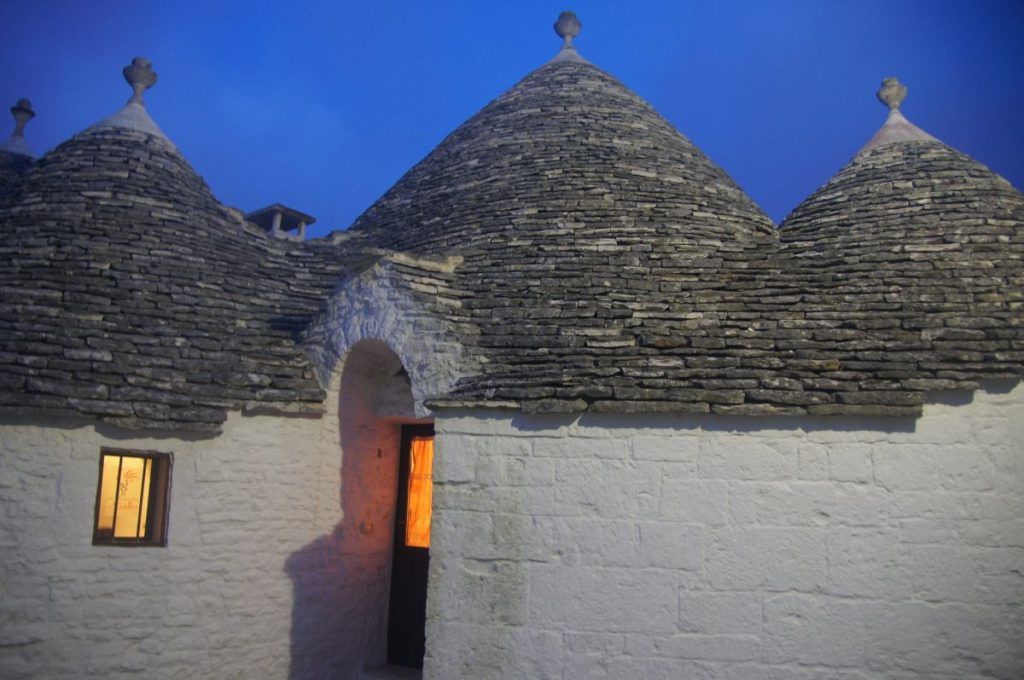
Italy is full of beautiful medieval, Renaissance, and Baroque buildings, and you’ll become quite familiar with these styles of architecture as you travel around the country. There’s one Italian town, though, that looks completely different from anyplace else in Italy, and probably completely different from anything you’ve ever seen before. Unless you grew up in the Smurfs village, in which case you will feel right at home. It is one of the most offbeat places to visit in Europe.
This place is called Alberobello, and it’s located in Puglia, a region in the far southeast corner of Italy, or the “heel” of the boot. While Puglia is deservedly popular with domestic tourists, its charms are still unknown among most foreign visitors. Alberobello translates as “beautiful tree” in Italian, but you won’t see many trees here. What you will see, however, are row upon row of small, round, houses that are painted white and topped with a conical roof. These traditional houses are called “Trulli”, and they are dotted all around the countryside in this area as well as in the town centre.
Most Trullis are small, modest homes and were originally inhabited by the hardworking peasants of Puglia. Since the soil in Puglia is very rocky, these peasants had to spend a great deal of time and effort removing stones from their plots of land before they could plant any crops. They were then left with large piles of stones, which they saw as an obvious source of building materials. The first Trulli were probably temporary shelters and storehouses in the fields, and later the peasants built homes for themselves in the same manner.
Towards the latter half of the 19th century was the golden age for Trulli, and in the 20th century, many of them were abandoned. Nowadays, they are seeing a resurgence in popularity, largely thanks to the local tourism market. Many of Alberobello’s Trulli have been converted into restaurants and guesthouses, so you can dine and even sleep inside them to get the full experience. Trulli Lovely is one such guesthouse and is very centrally located. For dinner, head to Il Pinnacolo to taste the authentic local cuisine of the area. Puglian cuisine features dishes that you won’t see elsewhere in Italy, many of which are suitable for vegetarians and vegans.
Neuschwanstein Castle, Germany
Kriszti from She Wanders Abroad
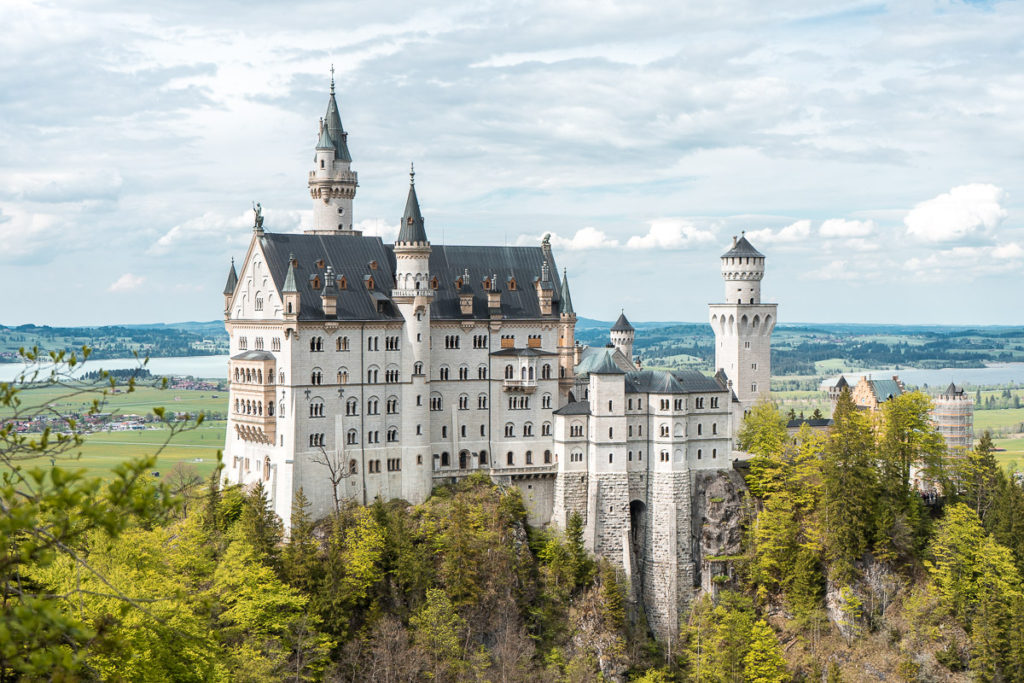
Neuschwanstein Castle in Germany is undoubtedly one of the most unique and offbeat places to visit in Europe thanks to its fairytale looks and the breathtaking scenery that surrounds the castle.
It’s located in the foot of the Bavarian Alps in Germany, near a little town called Hohenschwangau. Although it can be easily visited as a day trip from Munich, it’s best to stay around a few nights to be able to properly explore the castle and the surrounding area. The closest option is to stay at is Hohenschwangau but since it doesn’t have too many hotels it’s best to stay in the nearby Schwangau or Füssen.
Legend says that the Neuschwanstein Castle was the main source of inspiration for Walt Disney when creating the legendary Disney Castle. The resemblance is just remarkable – Neuschwanstein Castle truly looks like it just came straight out of a fairytale!
The construction of the castle began in 1868 at the request of the Bavarian king, King Ludwig II. When the king died in 1886 the funds of the project had been cut as well and therefore Neuschwanstein Castle was never finished. Two months later the castle was opened up to the public, and it keeps receiving millions of visitors every year ever since then.
Since the castle is located on top of a hill, you need to hike up roughly 1.5 kilometres on an uphill road to reach the castle. Although shuttle buses are available, they don’t go directly to the castle thus a little walking is inevitable. Hiking around the castle is completely free although if you want to go inside, you need to purchase a ticket from the ticket office in Hohenschwangau. The castle can only be visited with a guided tour, an adult ticket costs 13 EUR.
It’s worth spending some time on the hiking trails around the castle as they offer an amazing view of the surrounding area. If you’re looking for the best viewpoints around Neuschwanstein Castle, check out Marienbrücke (Mary’s Bridge) where you can have a full panoramic view over the castle. Many people only hike up to the bridge and then turn back, but you can also decide to hike further up as well. The roads are a little bit more challenging after the bridge but you will be rewarded with the best views in exchange.
Versailles Estate, France
Elisa from World In Paris
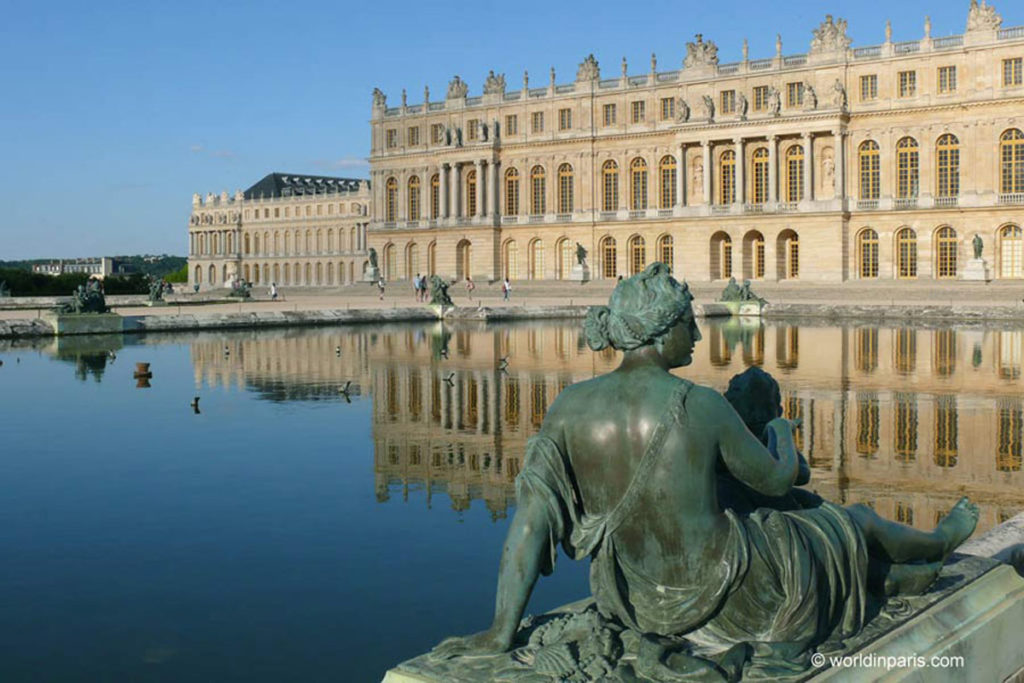
If you are looking for unique places to visit in Europe, you cannot visit the Versailles Estate when you visit Paris. A day trip to Versailles from Paris is very easy to organize – alone by train or with private transportation. Versailles is located 20 km west of Paris in France and the train ride only takes 40 minutes (20 minutes by car).
Versailles is unique for many things. This royal city was home to 3 French kings and their courts, the place where the fate of France was decided. It was in Versailles where Thomas Jefferson came to ask for the French’s help to fight the American War of Independence in 1778 or where the Treaty of Versailles which marked the end of WW1 was signed in 1919.
The Versailles Palace is also one of the most beautiful castles in the world and the finest example of French Baroque architecture. The surrounding gardens, designed by the landscape-designer André Le Notre, are one of the best examples of French-style gardens and a source of inspiration for other gardens in France.
Most of the people believe that Versailles Estate is all about the Palace. The truth is that Château de Versailles is only a part of what Versailles has to offer. The Versailles Estate also includes the French-style Gardens, the Grand Canal, a beautiful forest, and the Queen’s Estate which consists in the Grand Trianon, the Petit Trianon, and the Queen’s Hamlet.
Apart from these places, visitors can also admire the Royal Stables, located in front of the Palace’s main entrance, and the King’s Kitchen Garden, with access from rue du Marechal Joffre.
The Royal Stables are in fact 2 separate buildings, Les Grandes Écuries and Les Petites Écuries, and host today an interesting collection of royal coaches. The King’s Kitchen Garden is where all the vegetables and fruits to feed the Royal Family and the Court were growing and this has a separate entrance not included in the Versailles ticket.
Where to eat in the Versailles Estate? A good option is to bring your own picnic and eat it in the park. A more comfortable alternative is to have a meal at the restaurant La Flotille or La Petite Venise, both located inside the park, not far from the Grand Canal.
Vienna Woods, Vienna, Austria
Anca from Dream, Book, and Travel
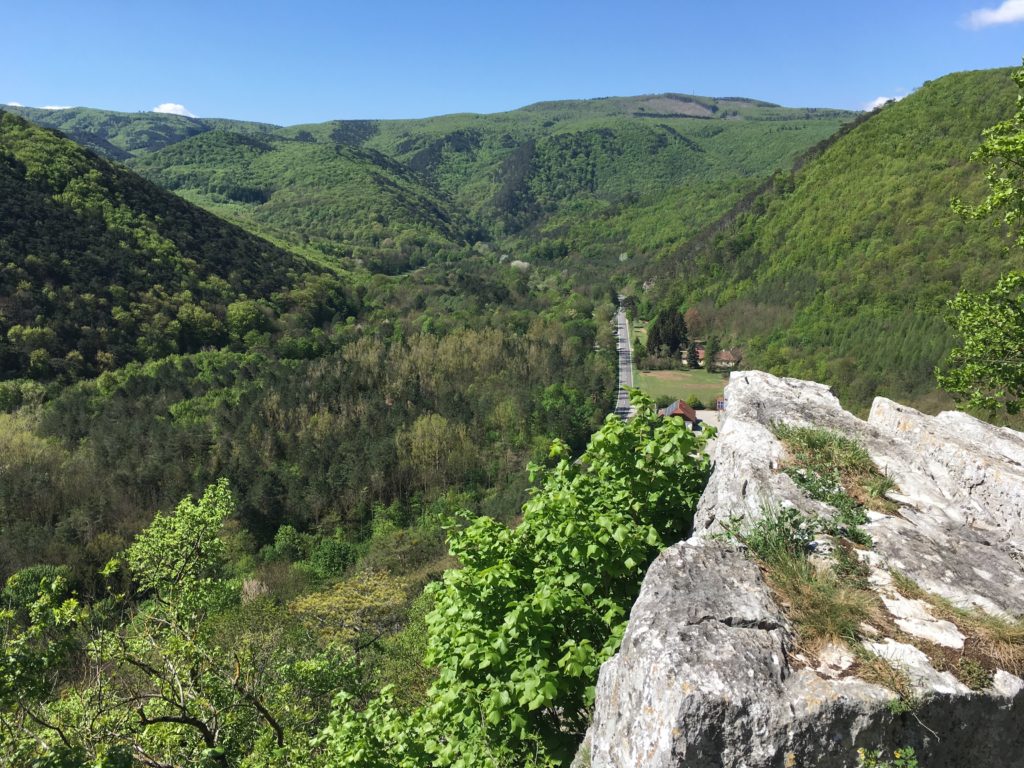
Vienna, the capital city of Austria, has been voted as the world’s best city to live in as well as the world’s greenest capital. The reason for this, partly, is the fact that seven of Vienna’s outer districts are literally located in a UNESCO Biosphere Reserve – the Vienna Woods – 1300 square kilometres of unspoiled nature right next to a big metropolis, a feature unique in the world.
The Vienna Woods are a forested hilly area, part of the foothills of the Austrian Alps, punctuated by wine-producing villages, spa towns, and crossed by clearly marked walking and hiking paths. Historically, the region has been used as royal hunting grounds by the Habsburgs from the 11th century until the 1850s. Testimony to that, one of the most popular places in the Vienna Woods is the Mayerling hunting lodge where crown prince Rudolf, heir to the Habsburg crown, and his mistress Mary Vetsera committed suicide in 1886.
Other historically relevant places to visit nearby are the Cistercian abbey at Heiligenkreuz, the imperial spa town of Baden, and Europe’s largest underground lake in the Seegrotte Hinterbruehl, a network of caves located under a former gypsum mine. The cave’s main hall, used as an aircraft assembly factory by the Nazis, can nowadays be booked for special events and gatherings.
The Vienna Woods is a favourite weekend destination for the Viennese who enjoy hiking its clearly marked trails, available in different flavours for every difficulty. From challenging circuits for professional hikers to smooth walking paths for seniors and parks adapted for little visitors such as the Naturpark Sparbach and the Laxenburg Castle park the region offers plenty for outdoor lovers. Most information on its many offerings can be found on its dedicated website. Wine-producing villages punctuate these walking trails, such that visitors can enjoy hearty meals from locally grown ingredients, delicious home-made Austrian deserts, and quality wines as well as locally produces syrups during their breaks.
Most locations in the Vienna Woods can be reached by public transport from the city and can be explored during day trips from Vienna. If you are wondering where to stay in Vienna to access the Vienna Woods, public transport connections are great from any location in the proximity of the Karlsplatz or Schottentor stations.
If you’d rather not leave the city, you can always enjoy the feeling of the Vienna Woods in Vienna’s district of Grinzing, famous for its wine-producing taverns called Heurige. Here you can savour the new wine of the current vintage alongside traditional food platters, live music, as well as local banter, cheer, and humour. From Grinzing, you can hike the Kahlenberg or the Leopdoldsberg for astonishing vistas of Vienna and the vine-covered hills that surround it.
Blaubeuren, Germany
Diana Lesko from The Globetrotting Detective
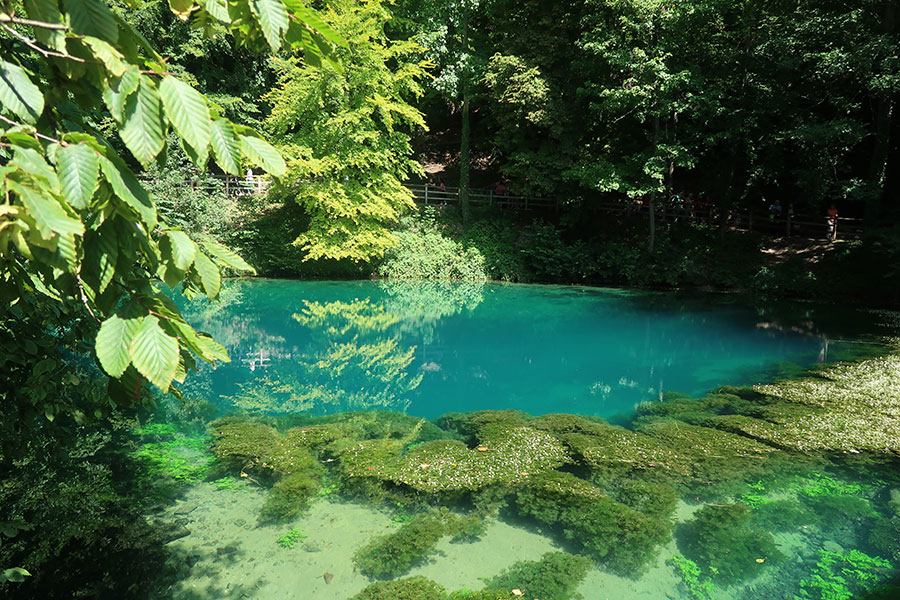
Blaubeuren in Germany is a charming medieval town, located in the Swabian Alps, in the southern German state of Baden-Württemberg.
Ulm is the closest city to this sensational tiny water spot, being only 20 minutes away. The capital of Baden-Württemberg, Stuttgart, is 75 km and the capital of Bavaria, Munich, is 185 km from Blaubeuren.
The main attraction of Blaubeuren is Blautopf. It’s a cute little spring that is the starting point of the Blau River. That’s even reflected in its name in German. Blau means blue and topf stands for pot. But Blautopf itself is more greenish than blue from certain angles. Blaubeuren can easily be visited from Munich as a day trip.
Blautopf is very easy to access. You can either travel there by car or by train. In case, you take the train, you need to change in Ulm.
The best time to visit this remarkable marvel is late spring and summer when the nature around Blautopf turns into lush green and the sun is brightly shining.
To be more precise, the morning hours offer the most phenomenal views. At that time, the colours of the water are extremely intense and the surface of the water is sparkling so that you feel yourself in a fairy tale.
Everywhere around Blautopf, the view is mind-blowing. Once you are done with discovering Blautopf from every single angle, it’s time to take a rest.
The café right next to the spring, Café am Blautopf, is the best place to have lunch, snacks or to have a refreshment.
When the weather is nice, there will be a lot of both locals and visitors in the café enjoying the best spot to relax closest possible to the shining emerald green water of Blautopf. Getting hold of the best seat will take some time but it’s absolutely worth it.
One of the most famous German specialities of the café is Flammkuchen, oven-fresh tarte flambée, with bacon and onion. It goes very well with any drink from beer to ice coffee.
After lunch and admiring this tiny glittering miracle, wander around the half-timbered medieval houses of Blaubueren. The most magical part of the town is Little Venice which will make you feel back in the 15th century.
Last but not least, there are dozens of hiking trails around Blaubeuren. Spending several days in the region is a great chance for you to explore the unspoiled nature of the Swabian Alps.
When it comes to staying overnight, Airbnb in any of the small villages or towns around Blautopf is the best option. The most fabulous choice is in one of the cute villages, Berghülen.
Has this off the beaten path Europe bucket list destinations inspired you to explore some of the offbeat places to visit in Europe?
Here are a few travel essentials for planning your trip to some of the best offbeat places to visit in Europe
Flights: You can book your flight to any of these offbeat places to visit in Europe or to a nearby city through TripAdvisor or Agoda or CheapAir or Cleartrip or Makemytrip or Priceline and get some awesome deals
Best Hotels: You can book online your hotels or resorts right here at any of these offbeat places to visit in Europe through TripAdvisor or Cleartrip or Agoda or Makemytrip or Priceline and save big.
Guided Tours: If you are thinking of travelling to any of these offbeat places to visit in Europe, you can book online some of the best tours through GetYourGuide.
We hope you liked our Europe guide to the best offbeat places to visit in Europe, which are also the most beautiful places in Europe to visit. Do let us know if you found this curated list of offbeat places to visit in Europe travel blog post useful. Which one of these is your favourite European destination? Are you aware of any other offbeat places to visit in Europe that you think we can feature? Do let us know. We look forward to your comments and feedback.
Do You Love Traveling?
Do you want to know how to travel the world? We have put together a very useful travel resources page with best travel tips. Go check it out now.
Thanks for visiting our site Voyager – imvoyager.com and taking the time to read this post!
If you wish to collaborate/work with us then reach us at imvoyager18@gmail.com
We’d love if you’d comment by sharing your thoughts on this post and share this post on social media and with your friends.
[shareaholic app=”share_buttons” id=”27413782″]
Follow our journey on our social media channels:
Facebook Twitter Instagram Pinterest YouTube
60+ Million Users Trust TripAdvisor With Their Travel Plans. Shouldn’t You?
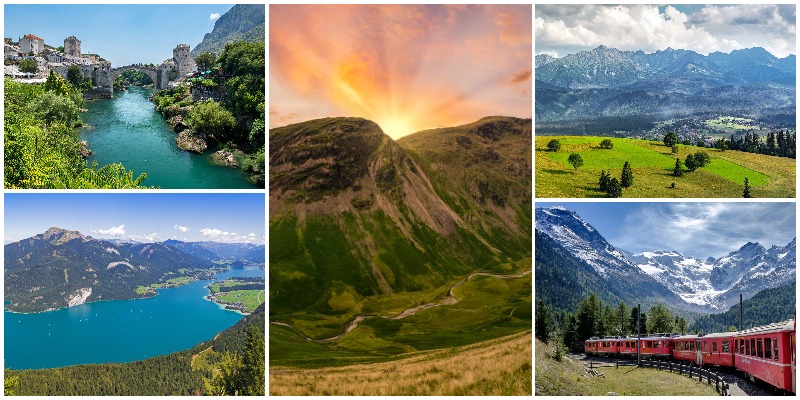


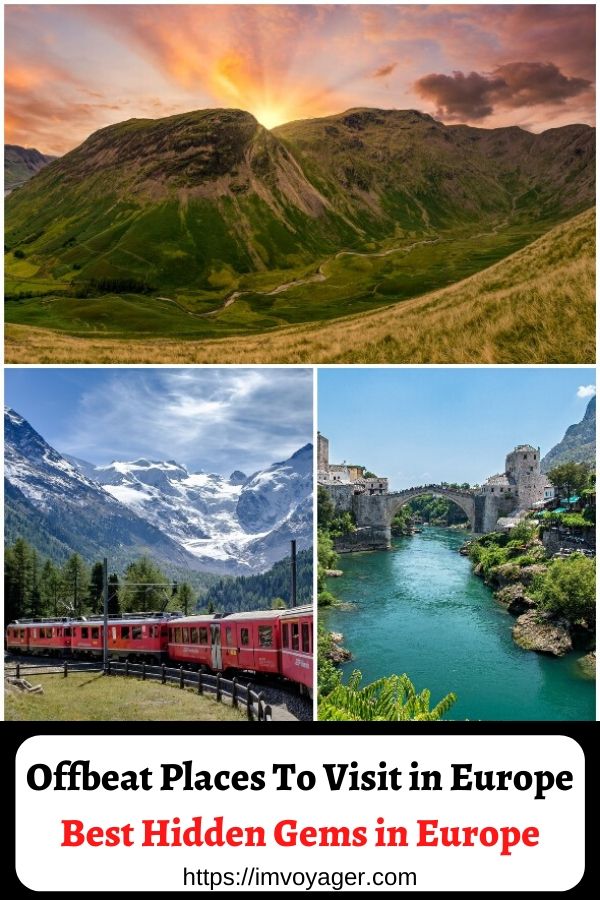
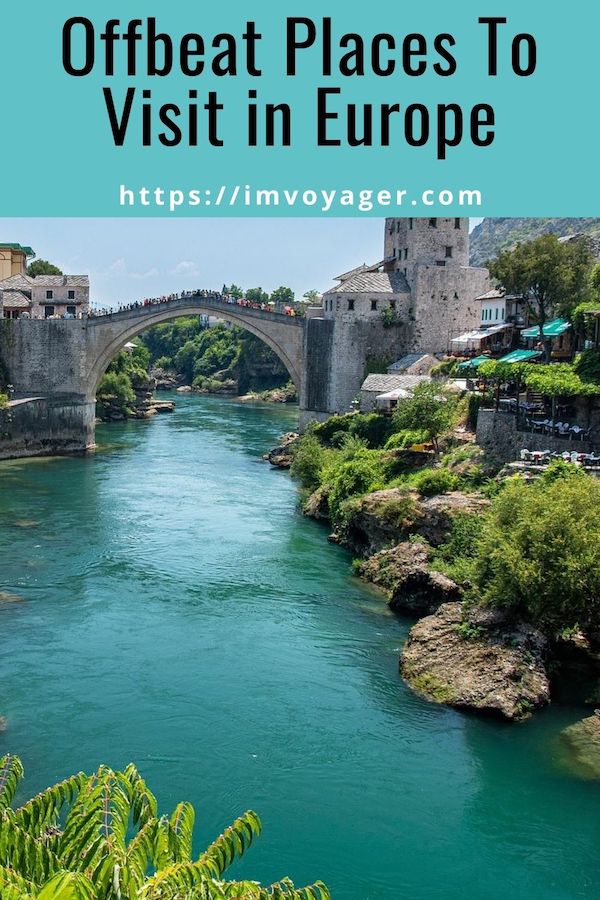
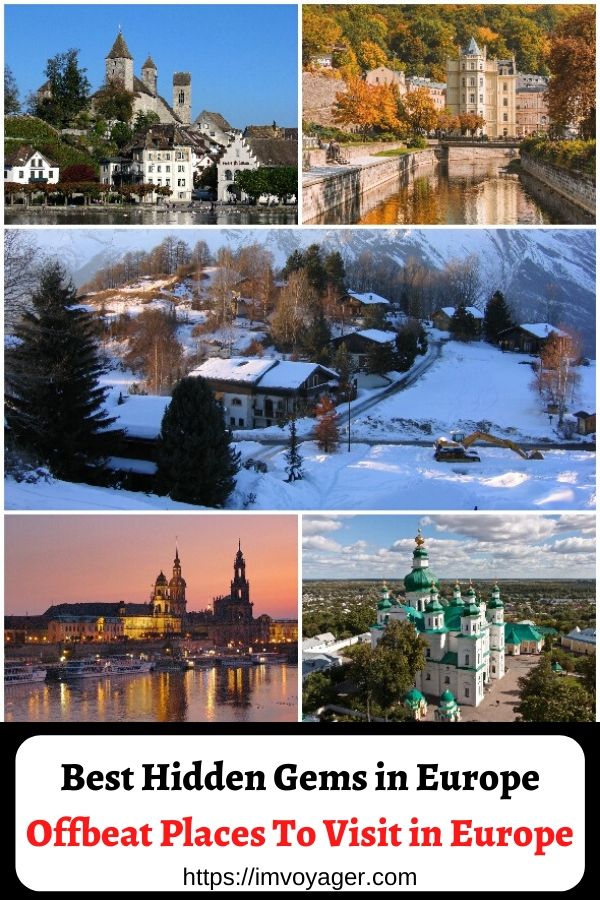
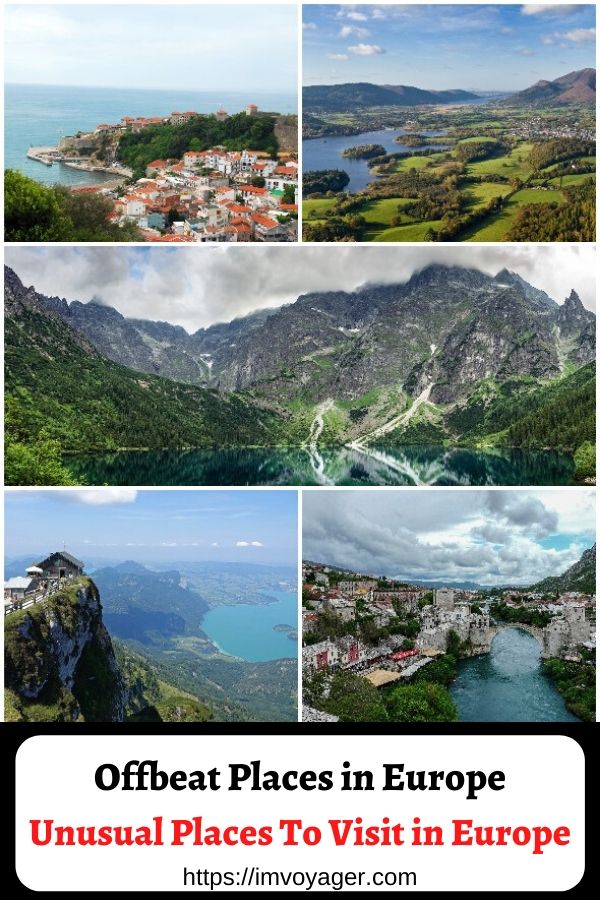


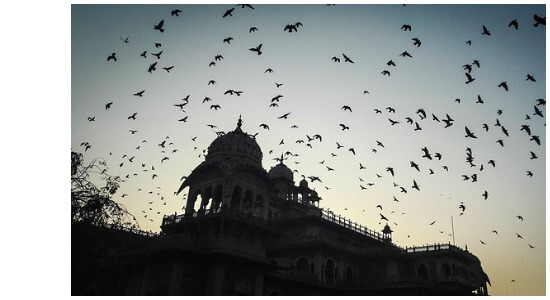
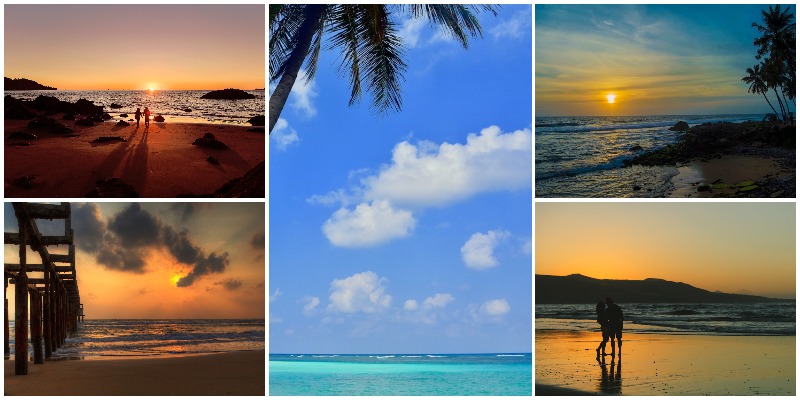
I’m always keen to look for more places to visit in Europe, and off the beaten path are some of my favorites. Kotor Bay is one of my absolutely favorite locations, and Perast – where the photo was – is unbelievably gorgeous, a must see!
Europe never cease to suprise me! I loved most the Danish Castle and the statues in Lithuania.
I was surprised to see Versailles Estate in France and Neuschwanstein Castle in Germany. Beautiful places and very popular for toursits – not really HIDDEN gems.
Reading through the list, I can say that you have quite a few wonderful places listed. And I got lucky towards the end, with Dresden, Lake DIstrict and Neuschwanstein as I have visited those a long time ago. I would, however, not call Neuschwanstein and Versailles offbeat places as they are tourist magnets.
Oh wow all of this looks so amazing. I want to travel now. The only place I’ve been was to Namibia out of country and its lovely there but also very dry and not a lot to see. I need to win the lotto then I can go view these places aswell.
I’m always looking for off beat places to visit so this list is so great for me! The only problem I have is where to start! there are so many good options.
Wow, I haven’t heard about most of these places! Thanks for this list full of offbeat places, traveling is much more pleasant when there isn’t a ton of tourists around you.
These all look like great places to visit! A few of them were on my list (Kotor, Neuschwanstein Castle and Mostar) but I’ve just added the rest now! Island Of Procida looks absolutely stunning! Thank you for sharing.
So happy to see Rapperswil on this list! It’s only a few minutes from where I live and it’s an absolutely fantastic place. The beautiful lake and the charming town are ridiculously photogenic!
We love visiting offbeat places in Europe. Procida island and Puglia in Italy are on our bucket list, as are Kotor and Mostar. Neuschwanstein Castle and Versailles are not really hidden gems though, as they are VERY touristy and crowded.
Beautiful places. Enjoyed reading this article.
I definitely like going to more off the radar places and there are certainly some great places on this list. I wouldn’t think that Svalbard, Zakopane, Versailles and Neuschwanstein Castle were hidden gems though. They are quite frequented by tourists.
How utterly delightful it is to read your post, Sandy! Europe is definitely on our must-visit destinations list, although Sury has been to quite a few places. It almost looked like this year would be possible for a European tour, except that we’ve all been confined at home. I would love to see the northern lights and all the UNESCO world heritage sites. Italy seems to be a favourite on this list! I can imagine why. Every location looks so picturesque. It felt like a mini-vacation to just read your post. Thank you for the treat!
My top pick out of your list would be Terceira Island in Portugal – my hubby and I want to visit Portugal and the Azores archipelago islands look amazing. We love being outdoors and we love hiking as a family. We are also not fans of places that are overcrowded and filled with tourists.
What a fantastic post! I always love the quieter (less obvious) places to visit when we travel.
Akureyri was one of my favourite parts of Iceland – I loved the snow-covered mountains, but we didn’t see many other tourists. If all the other spots on this list are like that, they’ll be perfect for me.
They all sound amazing, but I lovre the German food so Dresden would be at the top of my list. I also love that it has history as I’m a bit of a history nerd.
Europe is really on everyone’s list. But that is generally limited to the known attractions. These are hidden gems. Neuschwanstein Castle is love. It is so luring. Even the picture. Oh how I wish I could go there now!!!!!
More wonderful Europe inspiration. From this list I’ve only been to Neuschwanstein Castle and the Lake DIstrict, so plenty more places to explore. I’d love to visit Iceland and Svalbard!
Wow! What an amazing list. I thought I was quite well travelled but on this list, I’ve only been to the Lake District. Now the airport has reopened here in Malta, we have been looking for some inspiration. Especially love the off beat Italian ones, very easy for us to get to. So glad I found this post, getting terribly itchy for a travel adventure.
These certainly are off the beaten track! I’ve actually never heard of any of these spots, but whenever we’re allowed to travel to Europe again I would love to visit some of these places
All the places are so beautiful. I never heard about some of them but yes this picture & post make me add it into my visit list. Thanks for each & every detail about all of them
Thanks for such a comprehensive collection of just my kind of places to visit! With Korot Bay and Mostar, you bring back memories of our amazing trip to Sarajevo, Dubrovnik, Mostar, Serbia and Kosovo. I need to save this list fir when the world opens up again.
What an amazing list! I’ve now just added many more places to my bucket list! Switzerland had been at the top of the list for some time, but now I’m even more eager to get there.
So many great places to visit. I’ve been to the Lakes District in the UK and thought it was so pretty. During my visit to the UK I never actually made it to London. Beautiful country for sure. My daughter has been to both of the towns in Poland and loved them. I think I could spend some time exploring any of these places and be perfectly happy.
What a wonderful, encompassing list of hidden gems in Europe! There are so many I’d like to visit, but Procida has long been on my radar. I adore Italy and have covered a lot of ground there, but Procida remains elusive. I must indulge in the slower pace and “dolce vita” of Procida next time I go…Usually I’m cross-crossing the terrains to see as much as possible! Thanks for the reminder and the inspiration to plan my next visit.
Out of all of these amazing-sounding places, I’ve only been to one – the Vienna Woods! I’ll obviously have to up my travel game!
Great list although I’d argue that places like Versailles aren’t hidden gems. But there are lots of places in this post that are definitely off the tourist track.
wow, this is such an exhaustive list. Lovely places u have mentioned. saving this post for later reference.
Switzerland is definitely on my travel bucket list and Rapperswil looks like a beautiful place to visit! I haven’t been to any of the other places you mentioned either and I am all for offbeat places to visit. <3
Your posts are a treat to me, I really love Europe and since our trip got cancelled In June, your post came as a consoling read. When I replan I will include some of these gems
Frankly I have never heard of these places before. I am so glad to read this article and know exactly what we can see other than the common sights, when in Europe.
wow these super beautiful places across Europe. I would love to visit Swtizerland and Litunia. Super list worth bookmarking.
Its great to know about these hidden gems of Europe. I am going to mark them for my next visit to Europe. Photos have truly captured the aura of these places.
Offbeat places are the best when you are looking for something other than busy city life… These places look so amazing! Thank you for sharing!
This post has all the beautiful things! Scenic places and vacation seem difficult this year but Rapperswil surely catches all my attention. Bookmarked your post all this will help me plan mu Europe Trip.
Wow it felt as if I am seeing all this in front of eyes. You have so beautifully described Europe and these beautiful places.
Oh my god .. you have written in do detail.it feels like I am traveling with your post only..
I’m all about off the beaten path travel. You have curated an amazing list of places to do this. I want to go to all of them!
So many places to explore in Europe. Love this visual tour. Indeed a beautiful and historical places Europe have. Bookmarking this post for future reference
So many places on this list I’ve heard of, but so many I haven’t! Definitely keeping this handy for my next big Europe trip!
So pleased The Azores made it on to this list, did you know it is currently one of the world’s largest whale sanctuaries thanks to the eco system found there and you can see more than 20 cetacean (whale and dolphin) species.
It is definitely worth spending time whale or dolphin watching, when you are not eating the amazing food